
Architect, writer, photographer and computer programmer, Antonino Cardillo has expanded the boundaries of the architecture of his time by integrating knowledge of cybernetics, historiography, philosophy (simulated reality) and anthropology, archaeology, psychology (archetypes of the imaginary). He has been called “one of the few architects” nowadays by Paolo Portoghesi, “one of the most significant architects of our time” by Tony Chambers, and he has also lectured at the Bauhaus Campus in Dessau, the Royal College of Art and the AA School in London.
Rewriting history
Antonino Cardillo was born on May 18th, 1975 in Erice, Sicily. He studied Architecture at the Università di Palermo from 1993 until 1998, under the guidance of Professor Antonietta Iolanda Lima. In the spring of 2002, he graduated with the aquarium project Let There Be More Light for the Marina di Trapani.
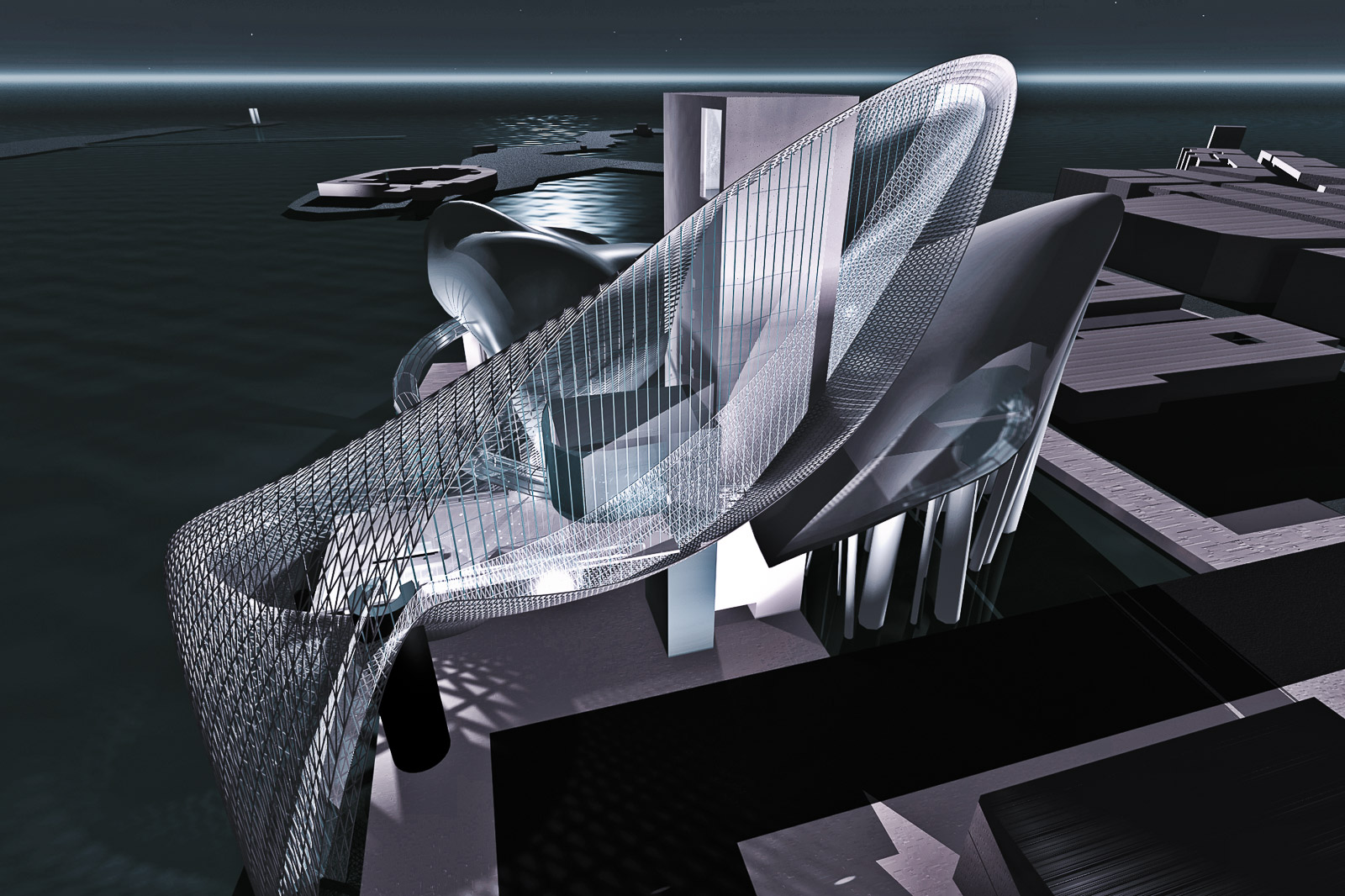
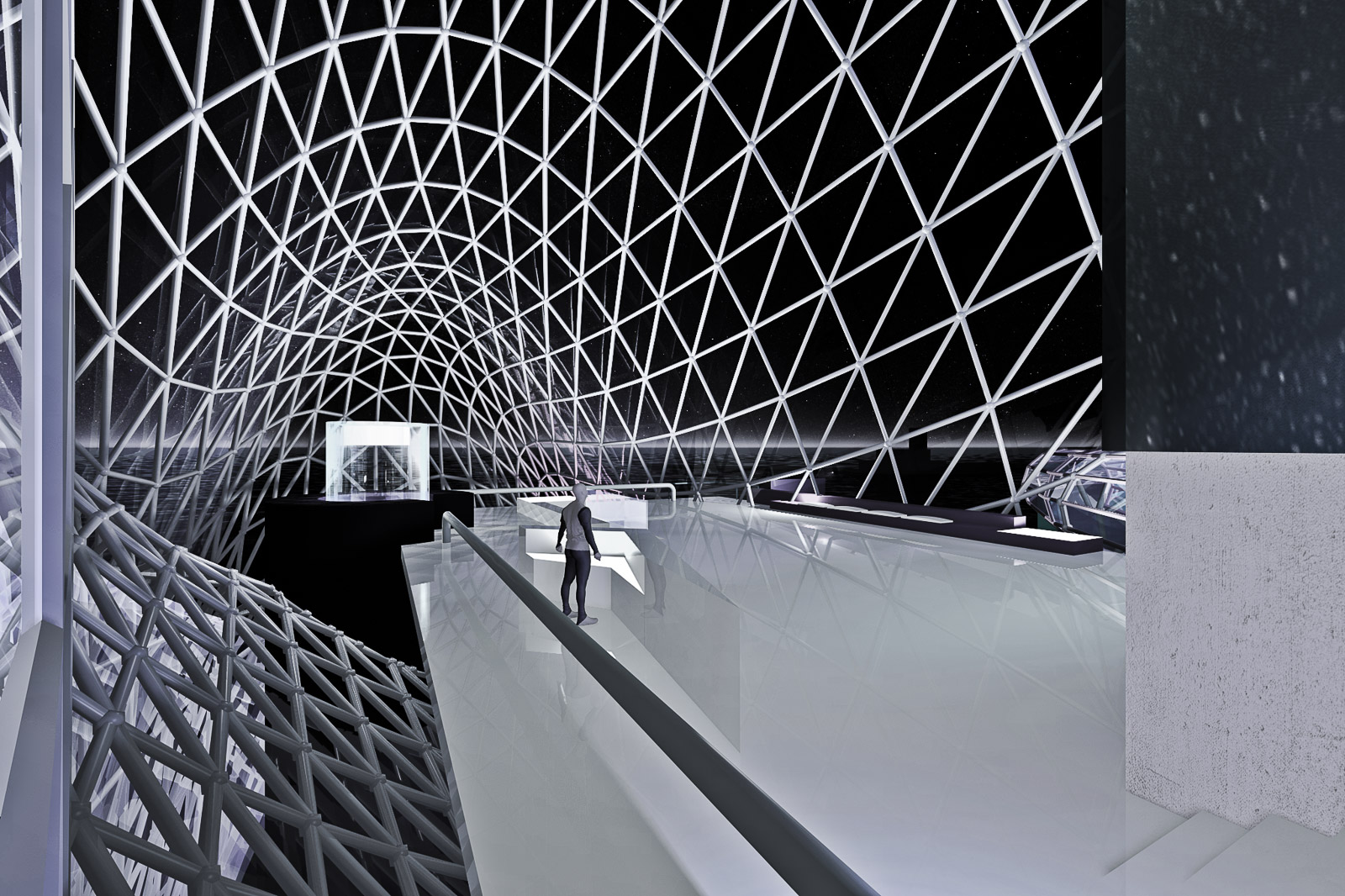
A year later, he published his website antoninocardillo.com. Six months later, he moved to Milan for a year of work experience. In the summer of 2004, he moved to Rome to study classical antiquities. There, for three years, he lectured in the course of Cesare Maria Casati at the Faculty of Architecture Valle Giulia and met Charles Searson, who henceforth curated the English versions of the texts of his projects. Meanwhile, his project Dualistic Space House in Erice, commissioned by Pietro Maltese, was longlisted as ‘House of year 2006’ by World Architecture News.
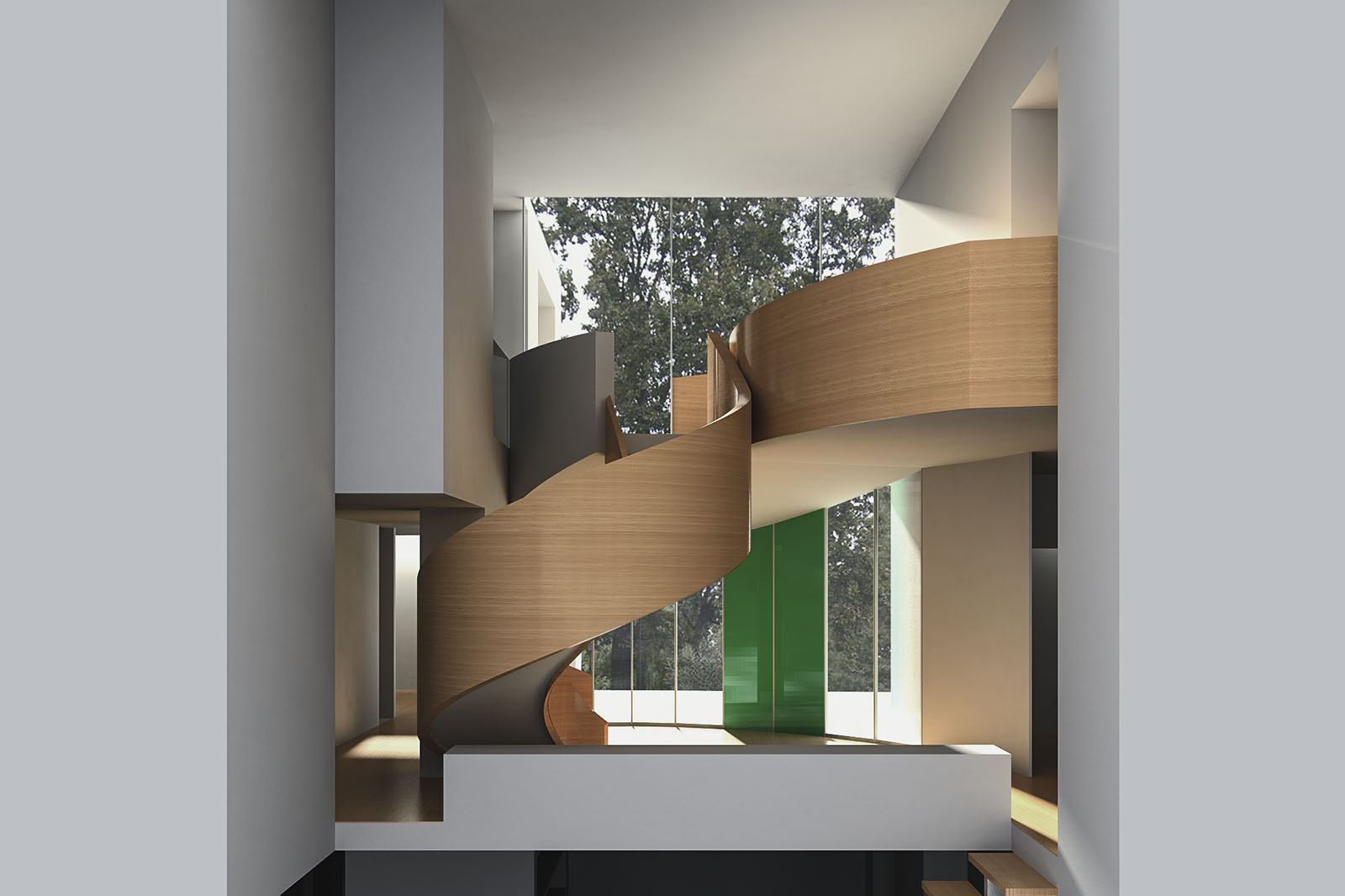
After that, London-based journalist Gian Luca Amadei invited him to comment on the state of Italian contemporary architecture for Blueprint magazine:
The history of man has developed through continuous interaction between different cultures. It often happens that the dominant take possession of the submissive, managing to disguise the process by carefully rewriting history.
Remote places
Between 2007 and 2011, he designed a series of unbuilt world-renowned projects, later renamed ‘Seven Houses for No One’, in which he integrated cybernetics to explore how architecture could interact with simulated reality, creating spaces that engage virtual visitors in a collective imaginary. The first project, Ellipse 1501 House, began in Rome, and Matt Hussey of The Cool Hunter, based in Sydney, wrote about it: “This new house designed by Antonino Cardillo has stumped us good and proper.” Devyani Jayakar of the Indian magazine Home Review observed: “The architecture appears to be the harbinger of an epochal change in Italy’s post imperial design history.”
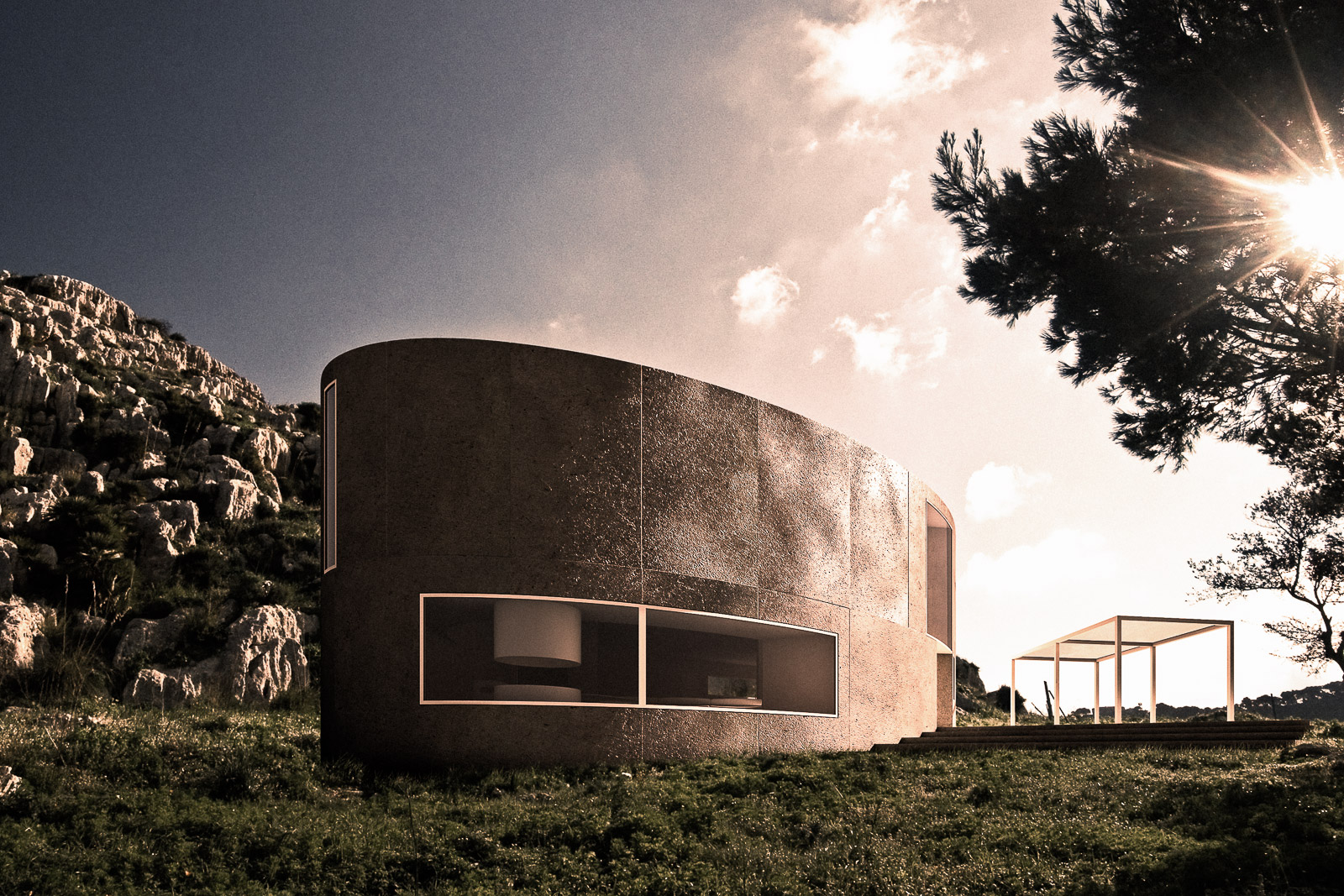
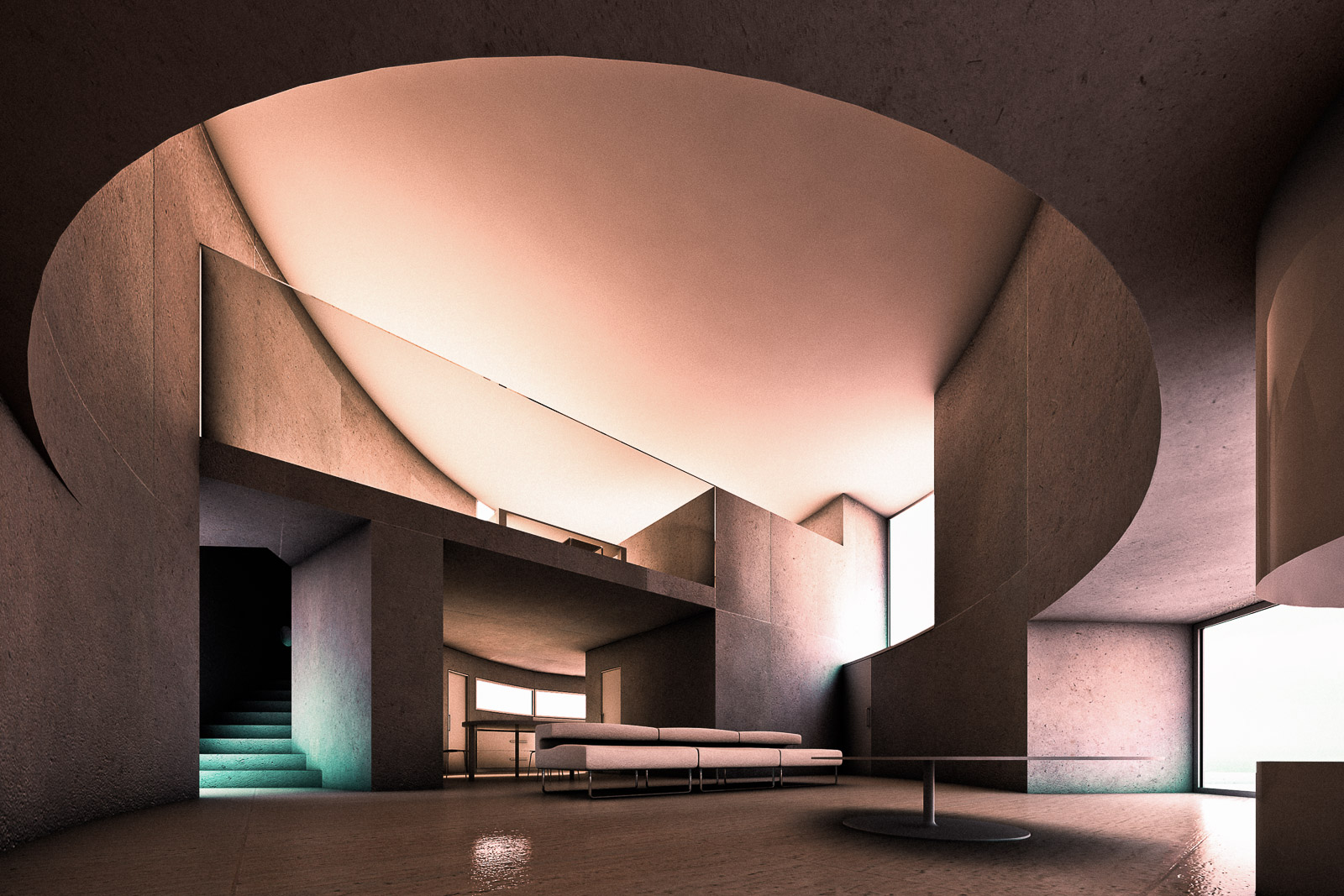
The series continued with Vaulted House in Parma, House of Convexities in Barcelona and Max’s House in a Small Lake in Nimes. Judith Jenner from Berlin said:
For Cardillo, music and cinema are the arts that have the strongest influence on his homes. But also all other things that concern him at the time of the design: his travels, his relationships, his emotions. Therefore, no design could be reproduced in another place and at another time. Cardillo likes to improvise himself on the piano and synthesiser, “but I can’t replay anything”, he says. In Melbourne, he designed a house that references John Foxx’s ambient sounds.
The also called Imagined Houses series was finished through the three variants of a project commissioned by Livio De Marchi for his plot in the Kew suburb of Melbourne: Concrete Moon House, House of Twelve, and the subsequently set in Wales Purple House. Helen Geng Haizhen from Beijing said about this:
Cardillo’s architectural masses are immense, as if hailing from distant lands and ancient civilisations, beautiful yet rebellious, generous, and fervent, with a profound and stirring rhythm. The fleeting interplay of light and shadow bestows the architecture with ever-changing appearances, as if engaging in a profound soul-revealing confrontation, bursting forth with awe-inspiring beauty and contradictions, resulting in a stable harmony.
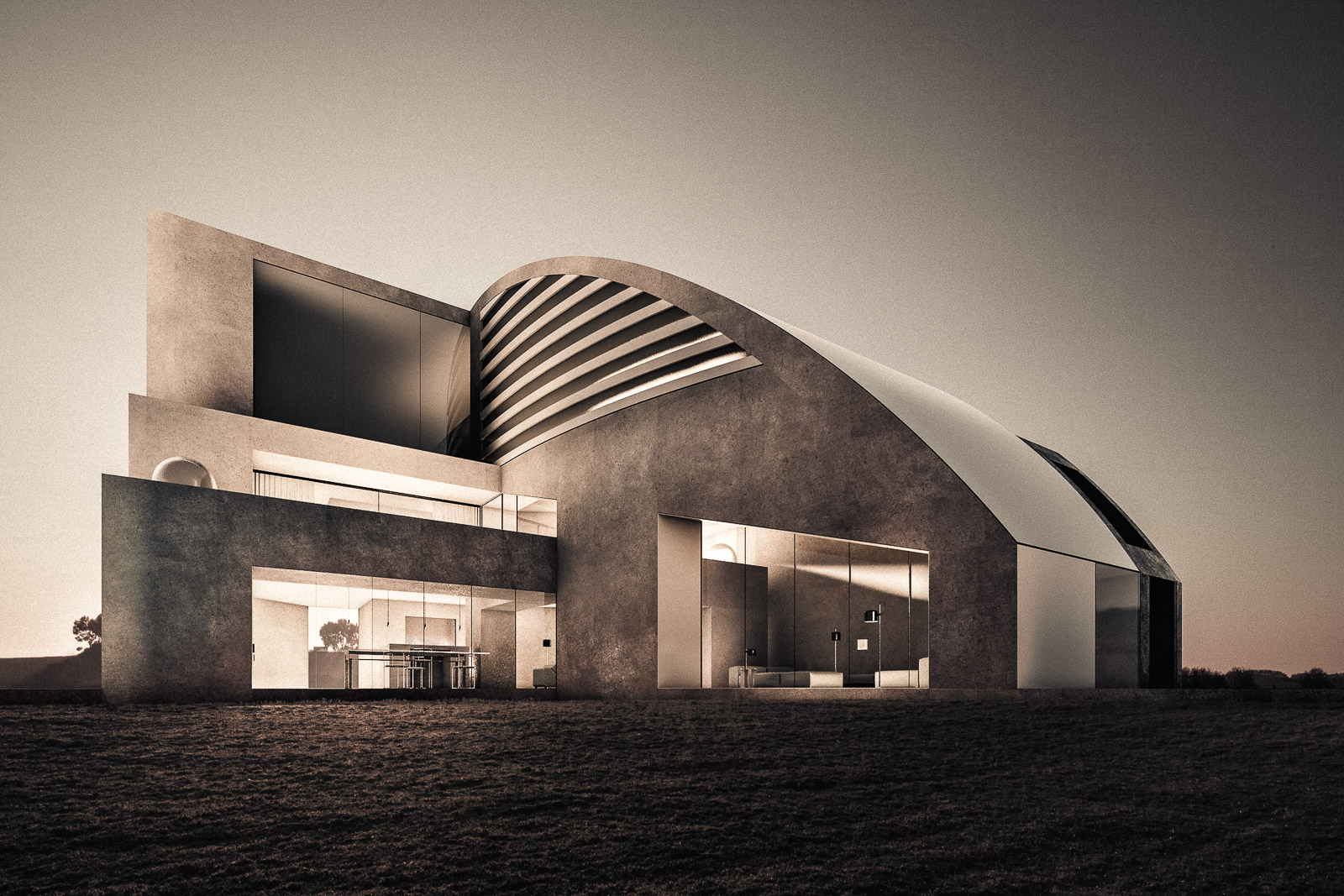
Wallpaper
Meanwhile in London, in the summer of 2009, he was selected by Wallpaper* magazine to feature as one of the thirty finest emerging architects. Upon the magazine’s invitation, he designed a golden model house with a grand arch, which was exhibited at the Neues Museum in Berlin and the Chabot Museum in Rotterdam. A year later he created two timber frame works. His first built residential project, Nomura Koumuten house in the Japanese town of Takarazuka, was commissioned by Nomura Koumuten Corporation director Kenji Nomura; and his first built commercial project, the Sergio Rossi men’s store in the Brera district of Milan, was commissioned by Wallpaper* editor-at-large Suzanne Trocmé. Writing about this project, the editor-in-chief Tony Chambers said “Cardillo is one of the most significant architects of our time.” Mitchell Oakley Smith and Alison Kubler observed in the volume Art / Fashion in 21st Century by Thames & Hudson: “A marriage of the sacred and profane, the design was intended both to augment and disrupt the reverence with which fashion products are presented and viewed in shops.” Massimo Locci from Rome also said:
Few young architects are able to translate the spatial articulation and the compositional richness of forms at the operational-executive level, without losing the purity of the theoretical-experimental approach. When all this is realised, it seems almost miraculous.
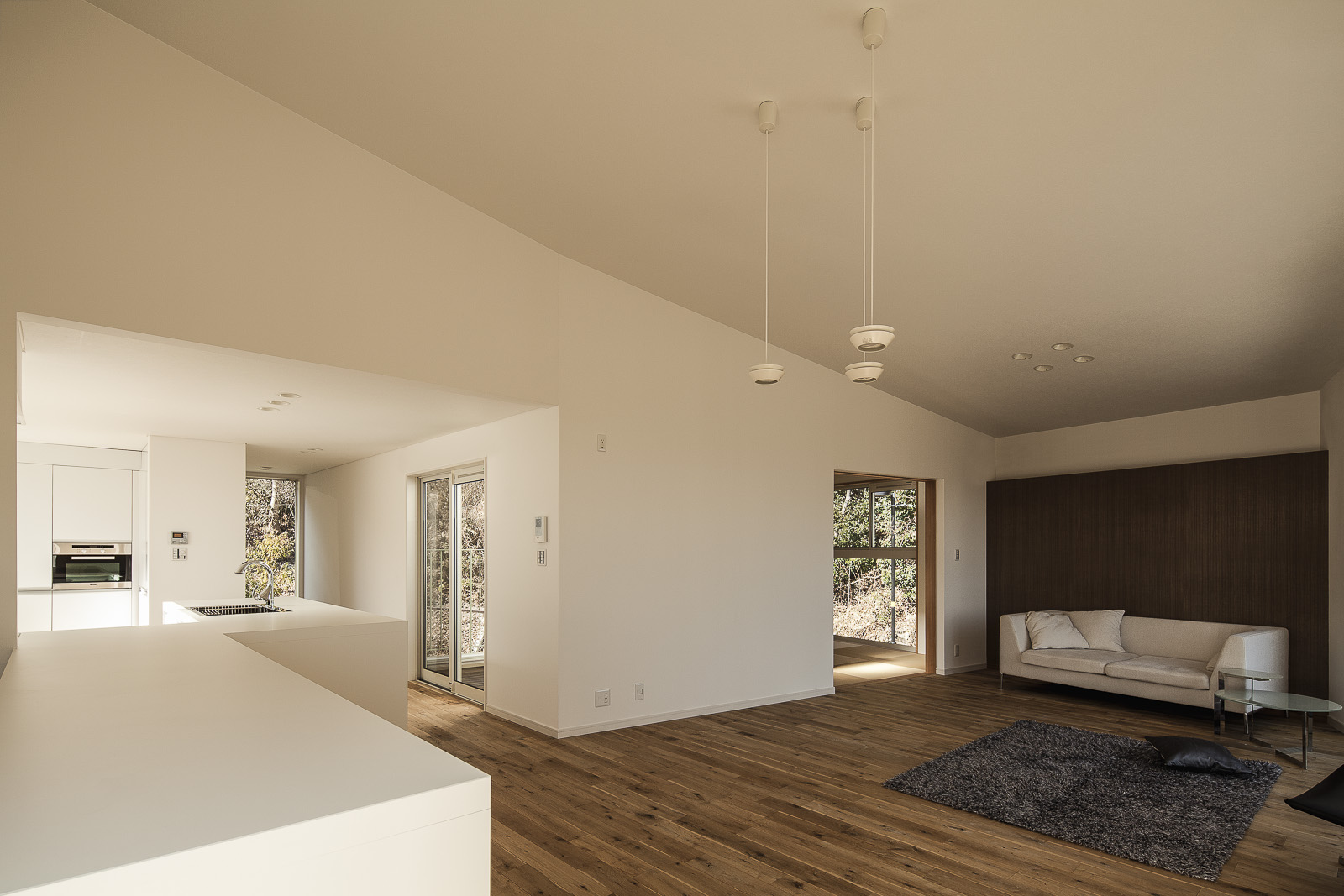
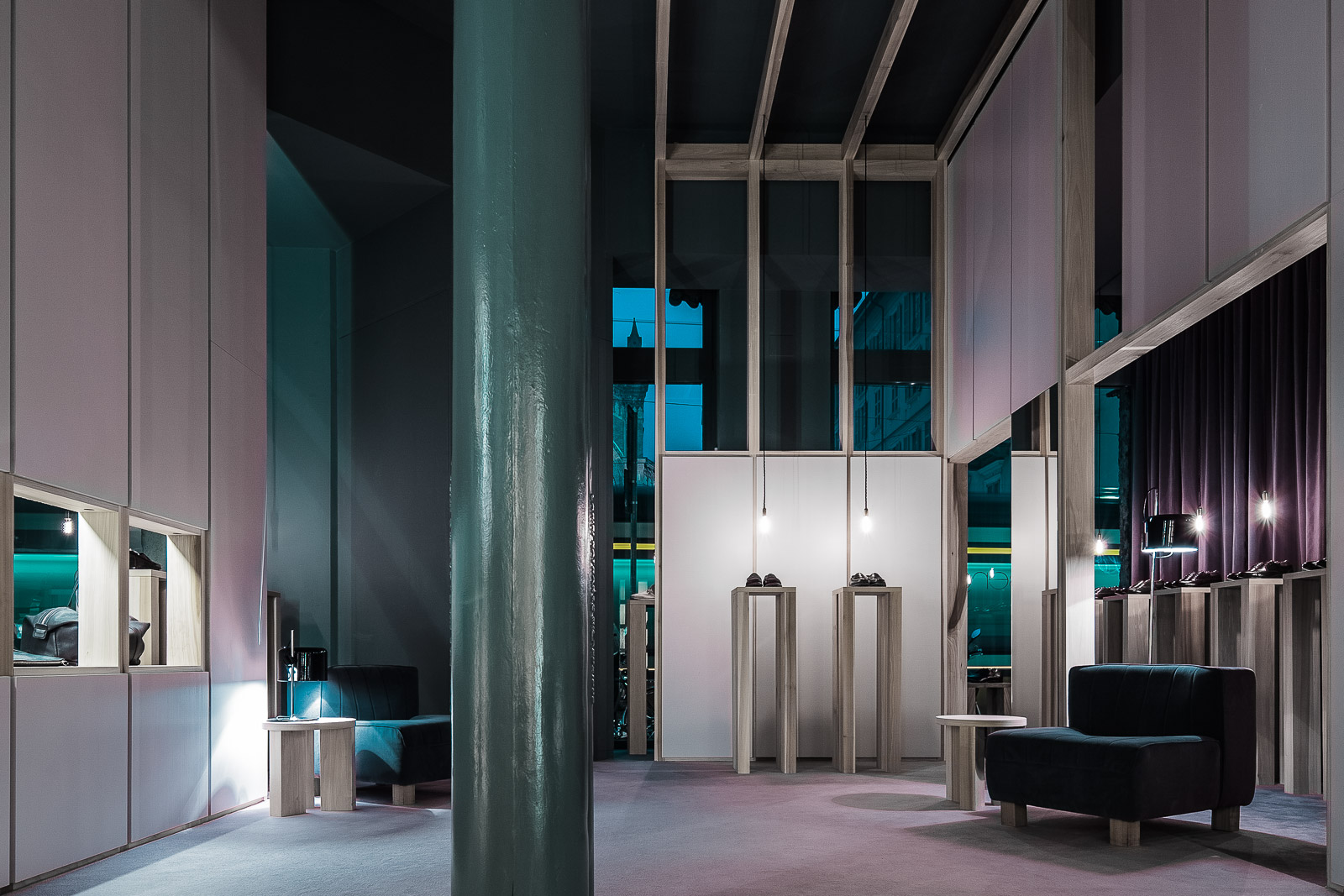
In the summer of 2011, Trocmé appointed him to design the Postmodern Cafe, an entrance dedicated to the London Design Festival with coloured fields for the main exhibition of the Victoria & Albert Museum exhibition ‘Postmodernism: Style and Subversion 1970–90’.

Mirrors
A year later, Susanne Beyer’s article in Der Spiegel magazine compared him to Thomas Mann’s literary character Felix Krull, saying:
The young Italian architect Antonino Cardillo took advantage of the fact that fiction and reality are hardly distinguishable. The Spiegel learned that Cardillo had sent pictures of allegedly built buildings to architectural magazines and gave the impression that the houses had actually been built.
The editorial article, referring to the computer-generated images of the ‘Houses for No One’ series, prompted divisive debates amongst Italian and German scholars, professionals and journalists about contemporary representations of architecture. Stefano Mirti from Milan said:
The faculty of our being able to deceive ourselves that today’s reality be the only true one, if on one hand it sustains us, on the other it throws us into an endless void, because today’s reality is destined to reveal tomorrow’s illusion.
Seven years later, Der Spiegel magazine itself plunged into the deepest crisis since its existence for deceiving its readers with falsified articles. Kirsten Wenzel from Berlin then observed:
Apart from the involuntary irony that Der Spiegel appears in both impostor stories, once as a prosecutor and once as an accused, they are fundamentally different, […] because while a case of deception in journalism, which invents stories about social reality, is able to put an entire industry in shock, the ‘Causa Cardillo’ […] remained largely without consequences. […] His renderings, also because they were skilled, have not only given him attention for his aesthetic visions, but also a kind of respect. Respect, as one shows it to the primary power of an artist who, in the name of art, takes the right to break applicable rules and cross borders.
Ancestral images
Meanwhile in Rome, in the autumn of 2012 he began the construction of his seminal work House of Dust for Massimiliano Beffa. In this work, he lent classical form to the space, reintroducing the themes of the ‘Polychrome’, the ‘Grotto’ and the ‘Arch’ to present-day architecture. Paolo Maria Noseda unveiled it in the Corriere della Sera magazine, saying: “A side entrance reveals a hall that, like a Greek mask suddenly worn by the visitor, projects and draws attention onto two tapered windows: a pair of eyes on the world.”
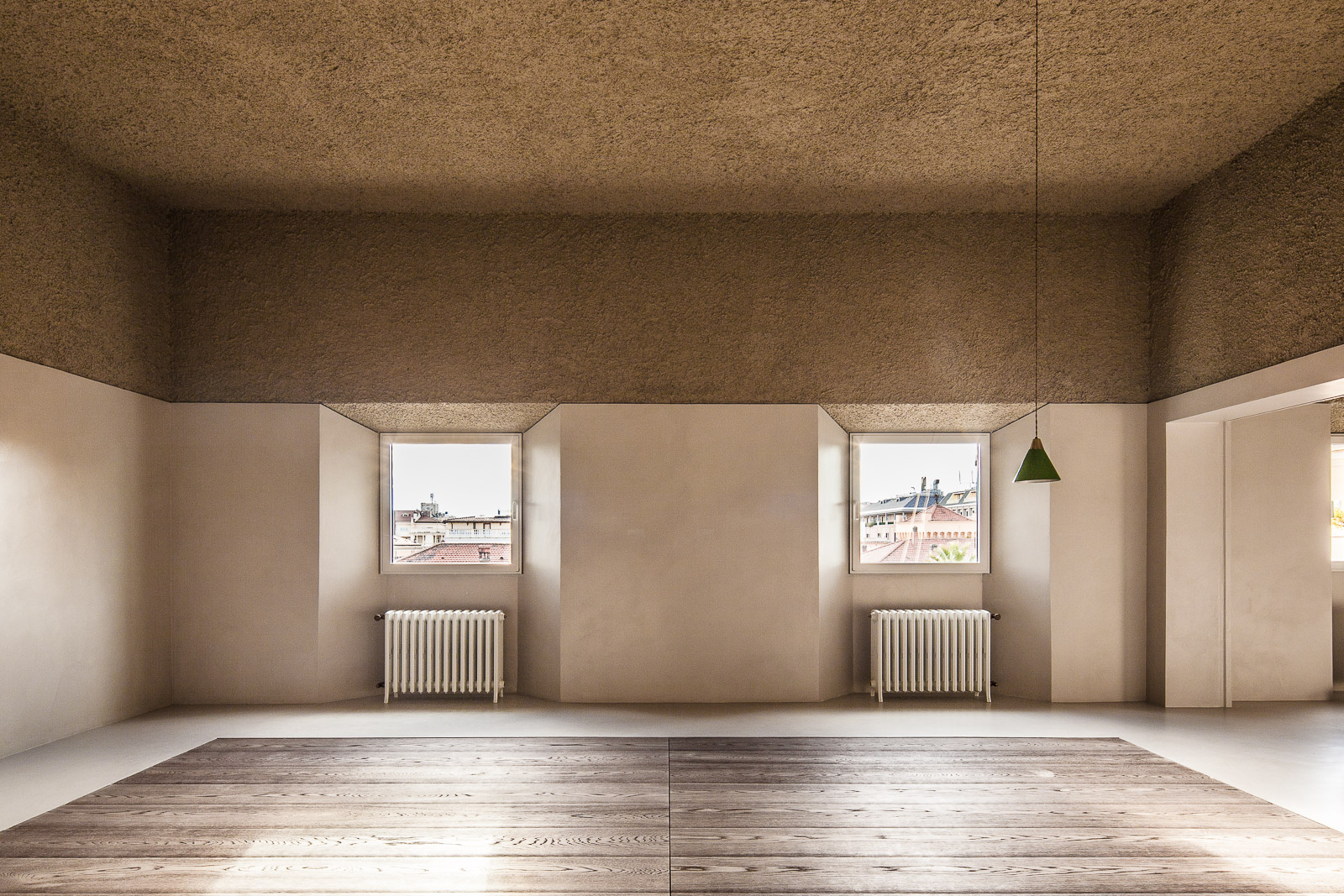
The House of Dust was also featured by Amy Frearson on Dezeen; then by Nacho Alegre—as one of the ten most exceptional spaces in the world over the last five years—for the Phaidon volume Room (2014); and by Paolo Portoghesi in his magazine Abitare la Terra. Additionally, trend-forecasting agencies WGSN, LS:N Global, Texworld and the Noroo Pantone Colour Institute recognised House of Dust. Furthermore, it was exhibited at the XXI Triennale di Milano among the fifty works recounting the history of Italian interior architecture. Curator Beppe Finessi wrote: “A project destined to become a milestone.” Thus, this work established itself as a manifesto of Cardillo’s oeuvre in numerous countries around the world. The architect delved into the theme of vault-cave-grotto in the Financial Times magazine:
The vault is the place where the architecture ‘happens’. It possesses an archetypal and sacred value. It goes back to the primary meaning of architecture, which is the protection of the cave, but also to its spiritual meaning, because every ‘vault’ is also the transfiguration of the sky in stone.
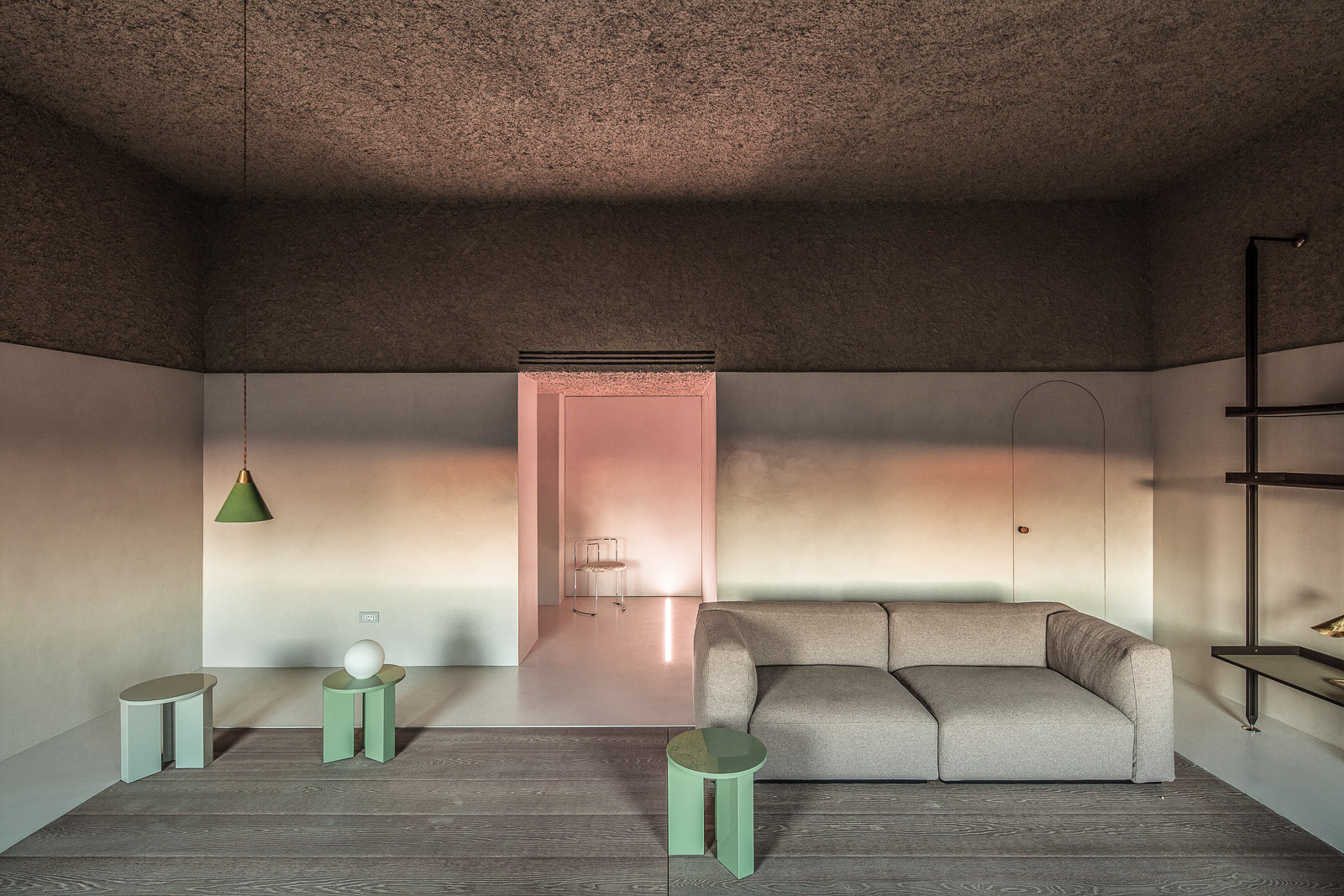
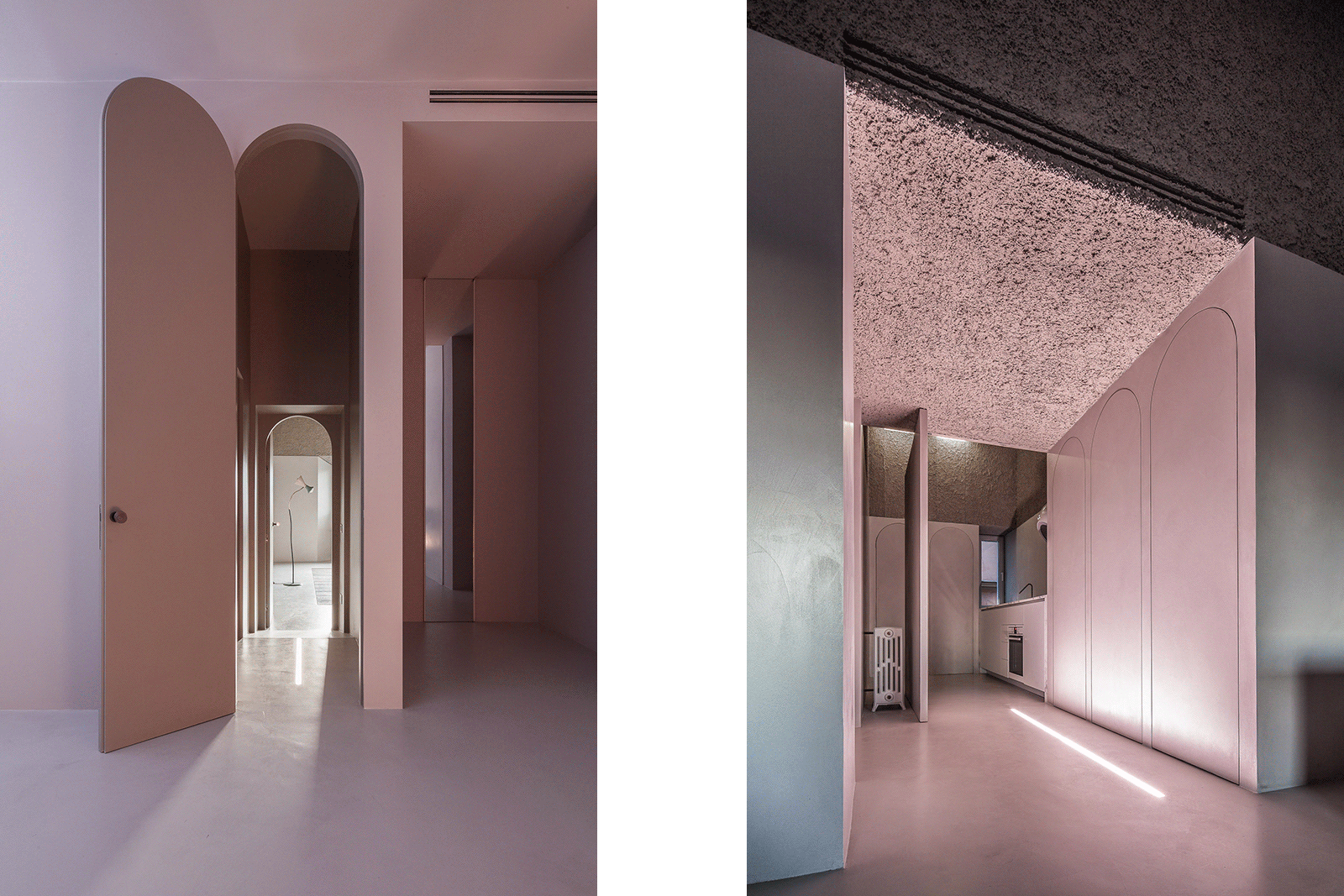
In the autumn of 2013, he moved to London and spent a formative time with the AA School teacher Ana Araujo. She wrote “Cardillo’s architecture promotes the sensorial mobilisation envisioned by [Walter] Benjamin as a potential force for social/political transformation.” At the Architectural Association School of Architecture, he also lectured at the Takero Shimazaki course and published a text in the Jack Self folio Fulcrum:
Our present appears lost in a loop. Obsession for novelty inhibits research; severing our link with the past restrains our critical skills, reducing it to a mere supermarket of interchangeable stuff. Behind the proliferation of neo-modern icons lurks a manipulation: ideas, passions, civil wars and ideals are constantly ransacked and abused. Original meanings are altered, rewritten or erased. Thus the past becomes innocuous, an image that celebrates consumerism.
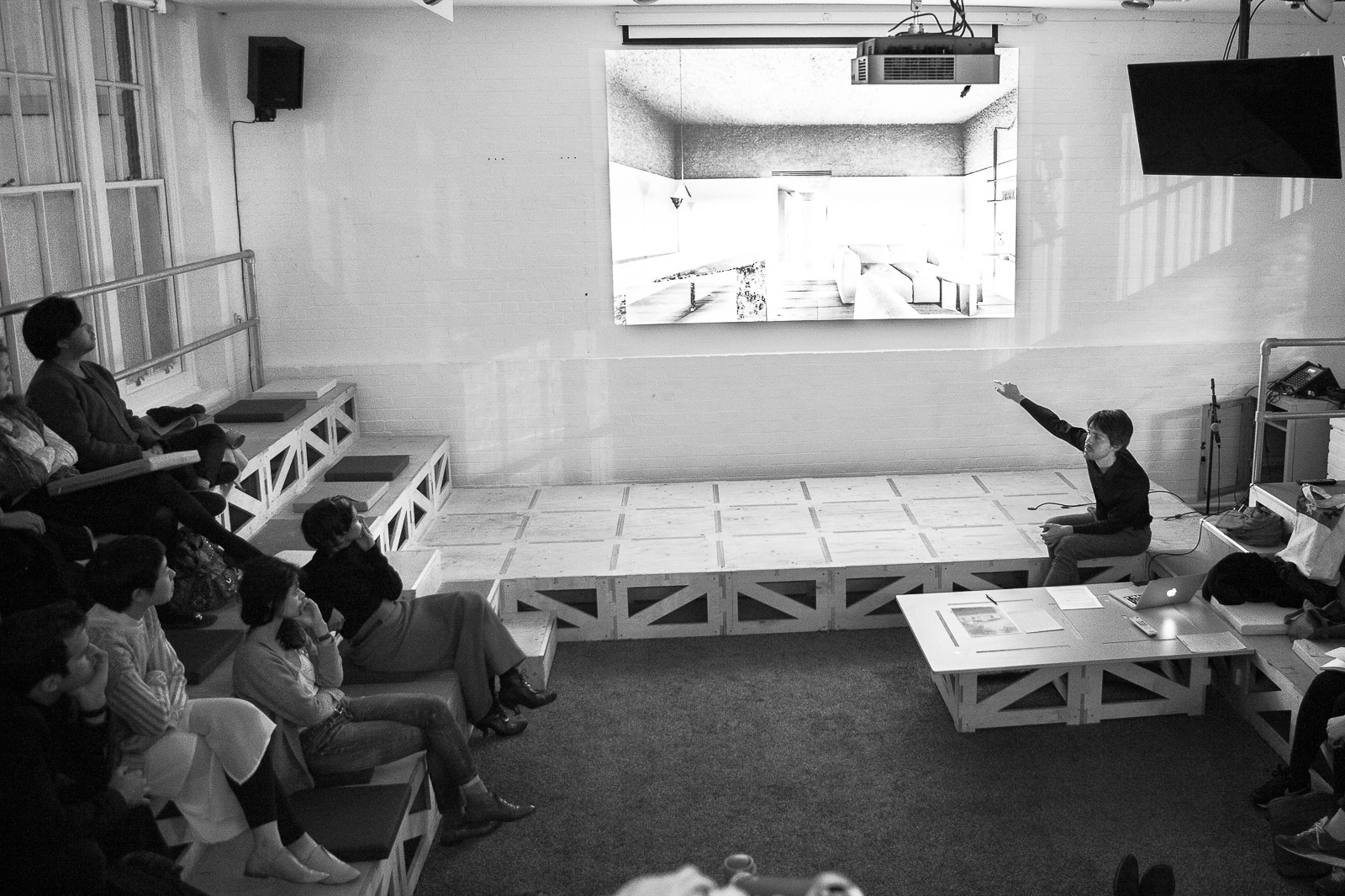
Back in Rome, in the spring of 2014 he created Crepuscular Green, a work built for the Klaus Mondrian art gallery Mondrian Suite in San Lorenzo ward. Alice Morby of Dezeen wrote the headline “Antonino Cardillo bases textured all-green gallery interior on Wagner opera.” Pierre Yovanovitch observed: “The various shades of green created a unique artistic atmosphere. The narrative was cohesive and aimed to unveil people’s imagination. The budget was limited, but the result was excellent, given the strength of the concept.” Jeanette Kunsmann from Berlin said:
Light below, dark above: this inversion creates not only a dramatic tension but also a sensual, mystical atmosphere. With its rather modest 40 square metres, Cardillo has transformed the gallery into a sacred space, providing a bold contrast to the eternal White Cube.
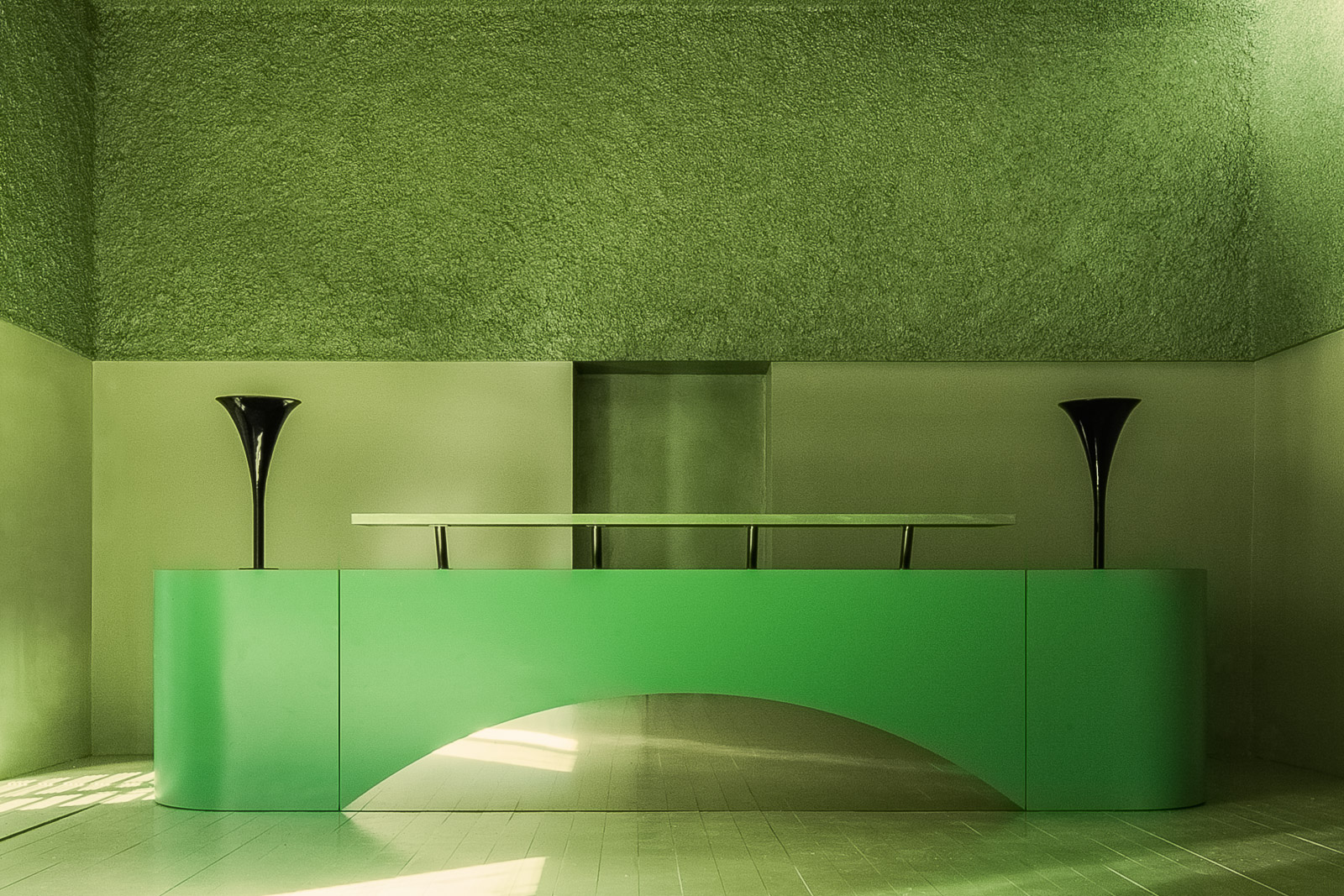
In October of the same year, he exhibited Min, a series of seven sculptures which relate the Arch to the Phallus, at Sir John Soane’s Museum in London. During this period, he continued working with Suzanne Trocmé, constructing the Illuminum perfumery in London. Anna Winston of Dezeen titled it “A multi-sensory space for experiencing and buying fragrance.” Colour as a Narrative was selected by LS:N Global among ‘the ten most innovative global luxury spaces’ of 2015: “The featureless surroundings force visitors to focus on their sense of smell as they choose from 37 unlabelled glass vials of scent.” Jessica Cooper from Paris said:
Somewhere on Dover Street, round the corner from high-brow Mayfair filled with the hustle and bustle of shopaholics frantically shopping in the luxe houses of Chanel, Prada and Dolce & Gabbana, there lies a fairy tale grotto filled with tranquillity and calm. Once entering this space, I feel that all time has stood still.
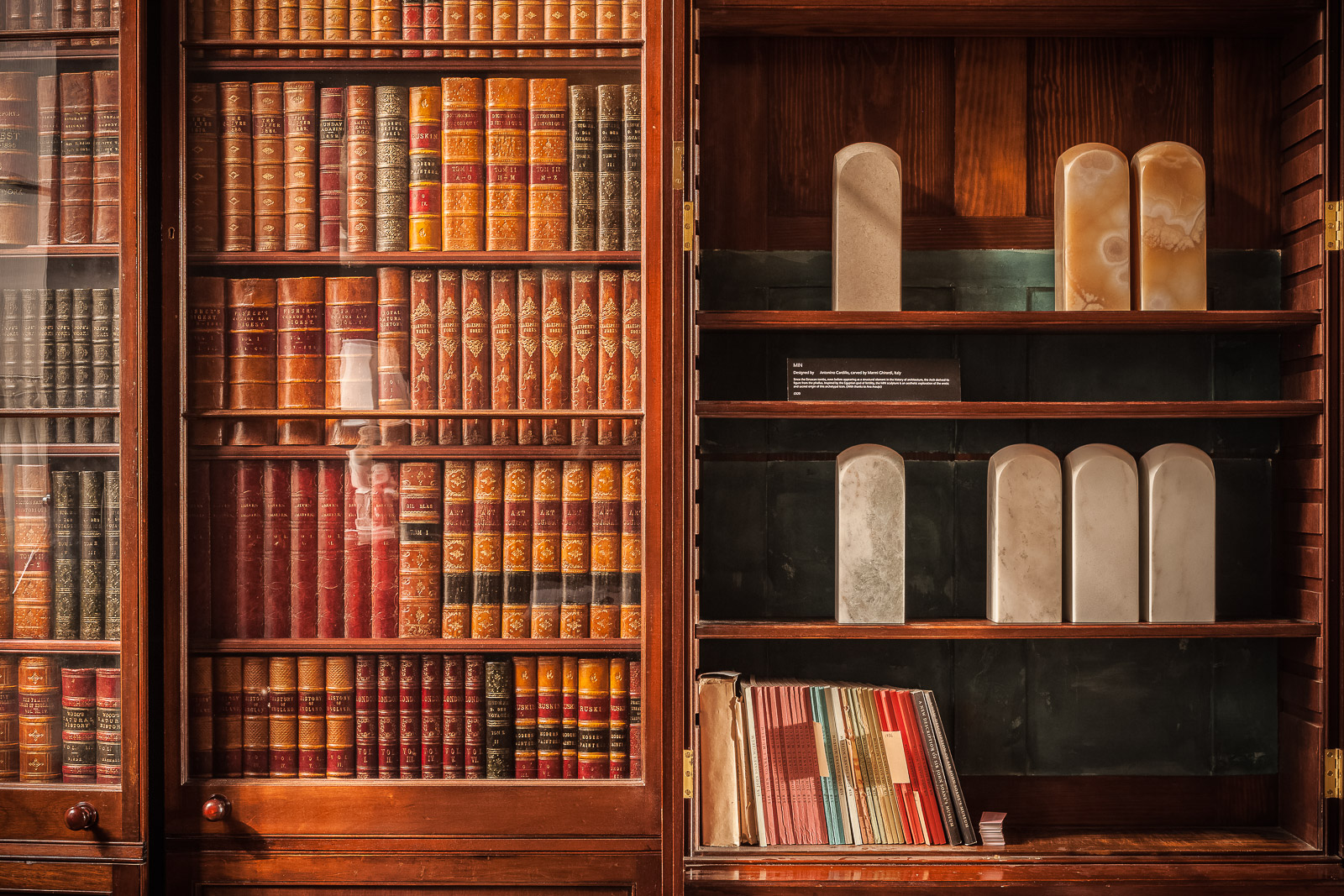
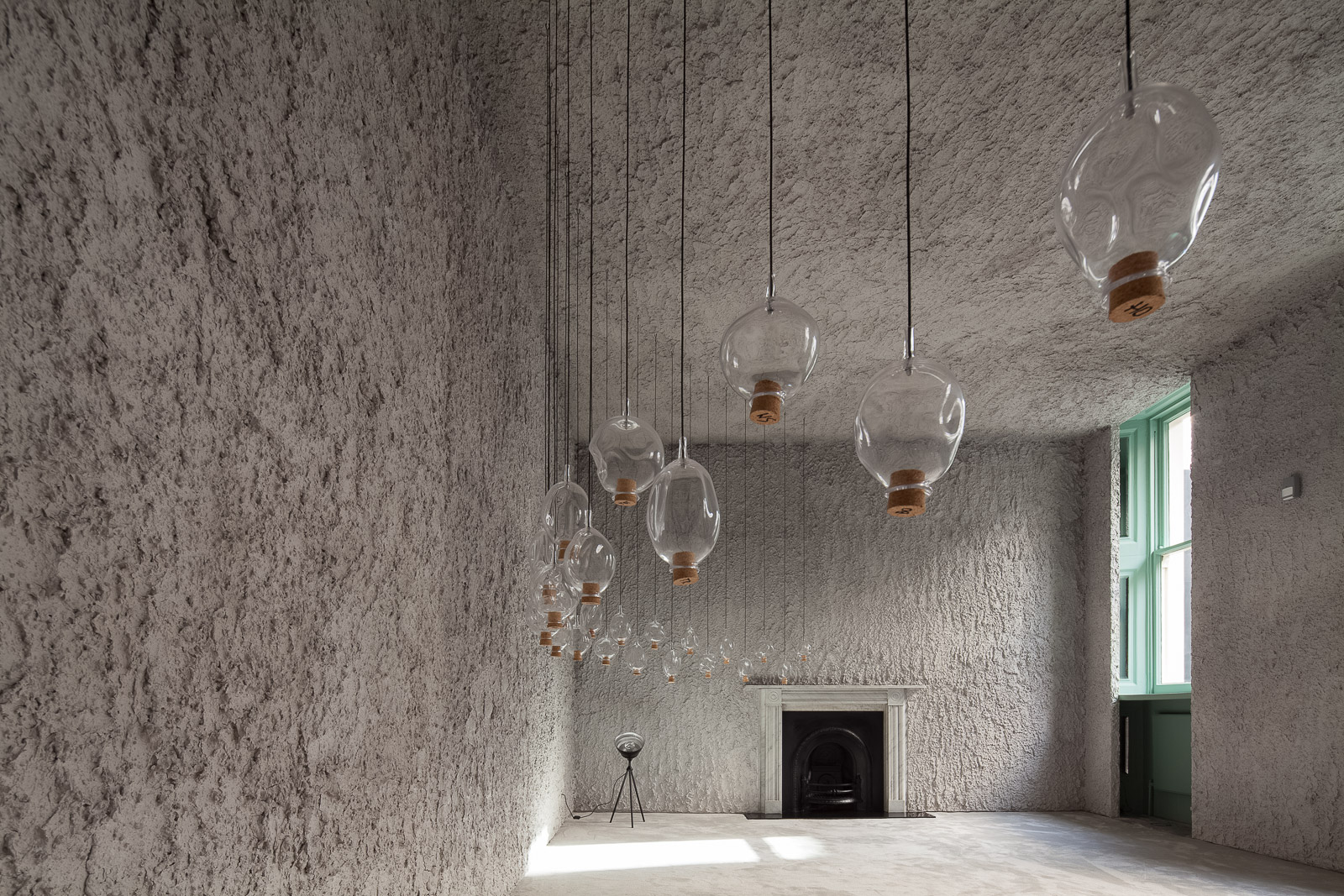
Evocation
He then moved to Trapani, pursuing the idea of connecting the anthropology and archaeology of the island of Sicily to the architecture of the present. In the summer of 2016, he completed construction of Specus Corallii, the oratorio of Trapani Cathedral, commissioned by the chief priest, Gaspare Gruppuso. Jean-Marie Martin of the magazine Casabella notices: “Antonino Cardillo, an architect who deservedly earned the attention of international critics, has created a space similar to a telescope aimed at the past of the place.” This work, the fourth in the series of ‘Grottoes’, was selected to open the architecture section of the issue dedicated to Italy in AD Germany and the final chapter of the volume Thinking Color in Space (2018)—a history of colour from Titian to the present day, published by the Darmstadt University of Applied Sciences. According to Annie Carroll from Melbourne, these grottoes “are some of the most influential interiors of recent times.” Mrinalini Ghadiok from New Delhi said:
Antonino Cardillo challenges the very norms of the architectural process as we have popularly come to know it. His works transcend the course to deliver moments that are sublime, experiences that are intangible, and spaces that are overwhelmingly immersive.
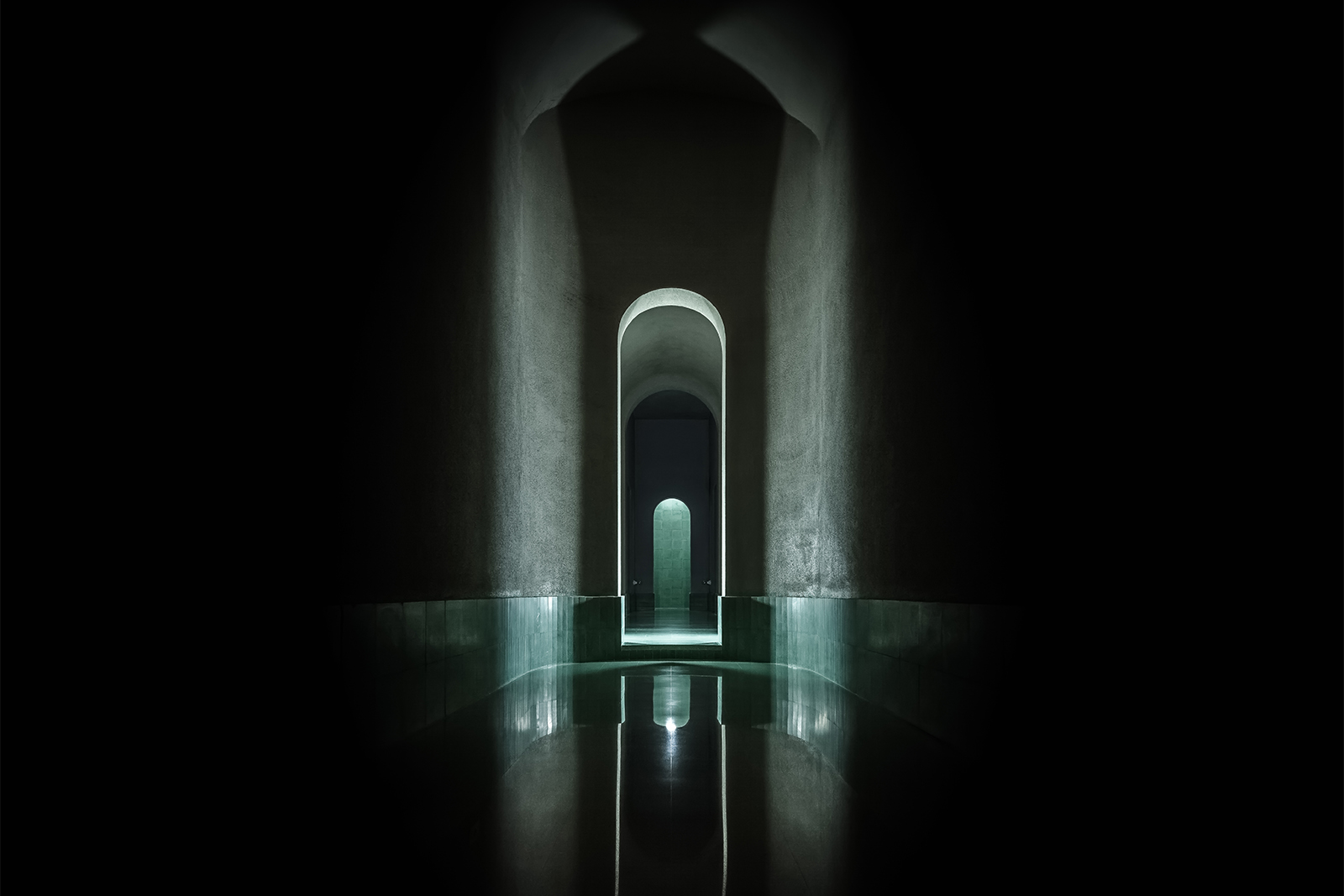
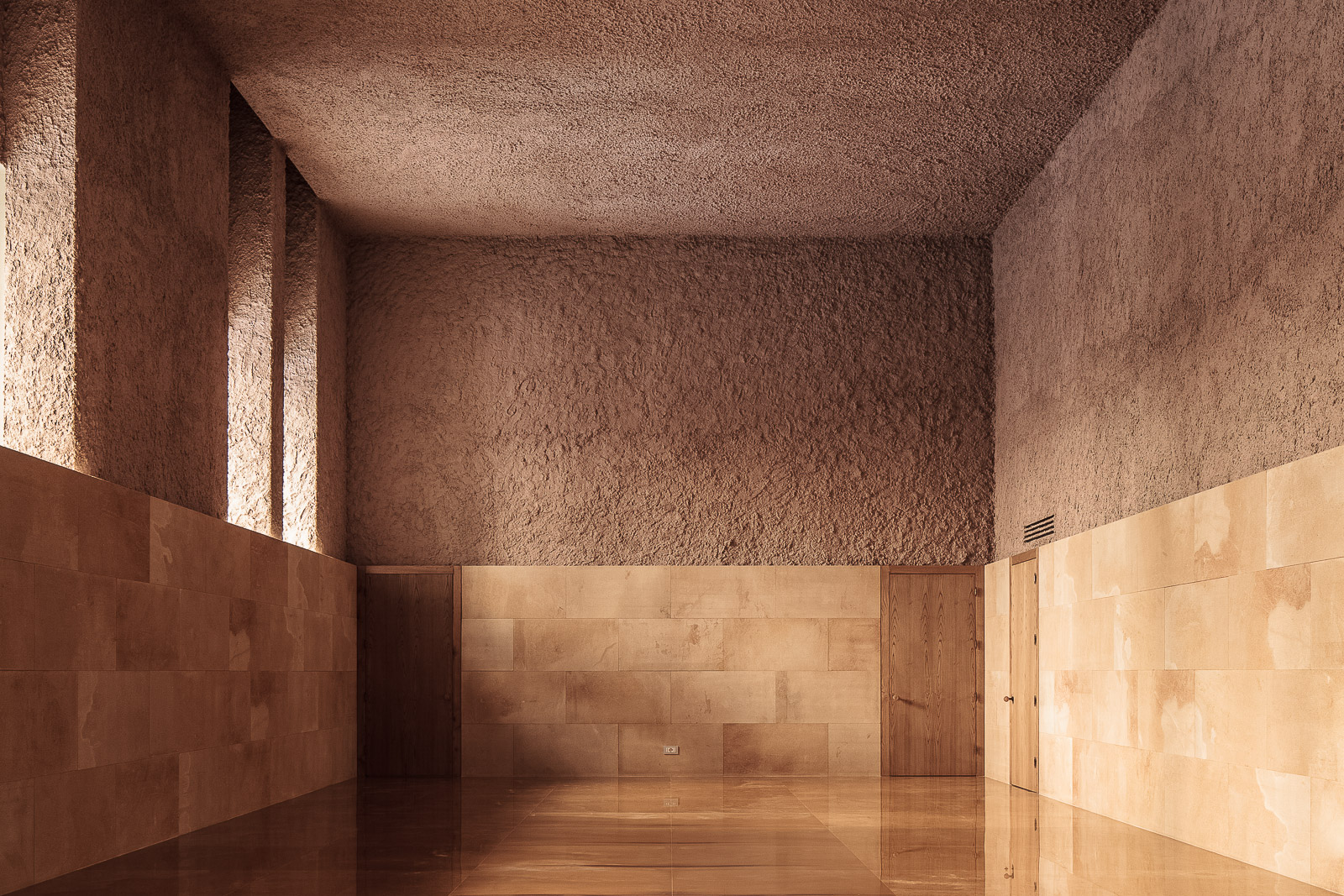
In the winter of 2017, Jeanette Kunsmann and Stephen Burkoff journeyed to Italy to visit Cardillo’s architectural works in Rome and Trapani, spending three days with the architect. Their investigation became the DEAR magazine cover story ‘Architecture and truth’.
Cardillo has neither a fixed office address, nor even an office in the classic sense. And he has no employees: the Sicilian designs and plans all his projects alone. […] One might, therefore, suppose that Cardillo is one of a number of minor, lesser-known architects. But that isn’t the case. Very few architects outside the three superstars of the industry (Libeskind, Hadid and Koolhaas) have attracted as much attention from the international press and trade magazines as Antonino Cardillo.
Ana Araujo from Windsor added:
I think Antonino is a designer trying to work in his own terms, and refusing to comply with the way designers tend to operate today. I think he relies on an idea of what it meant to be an architect in the past to shape his professional attitude.
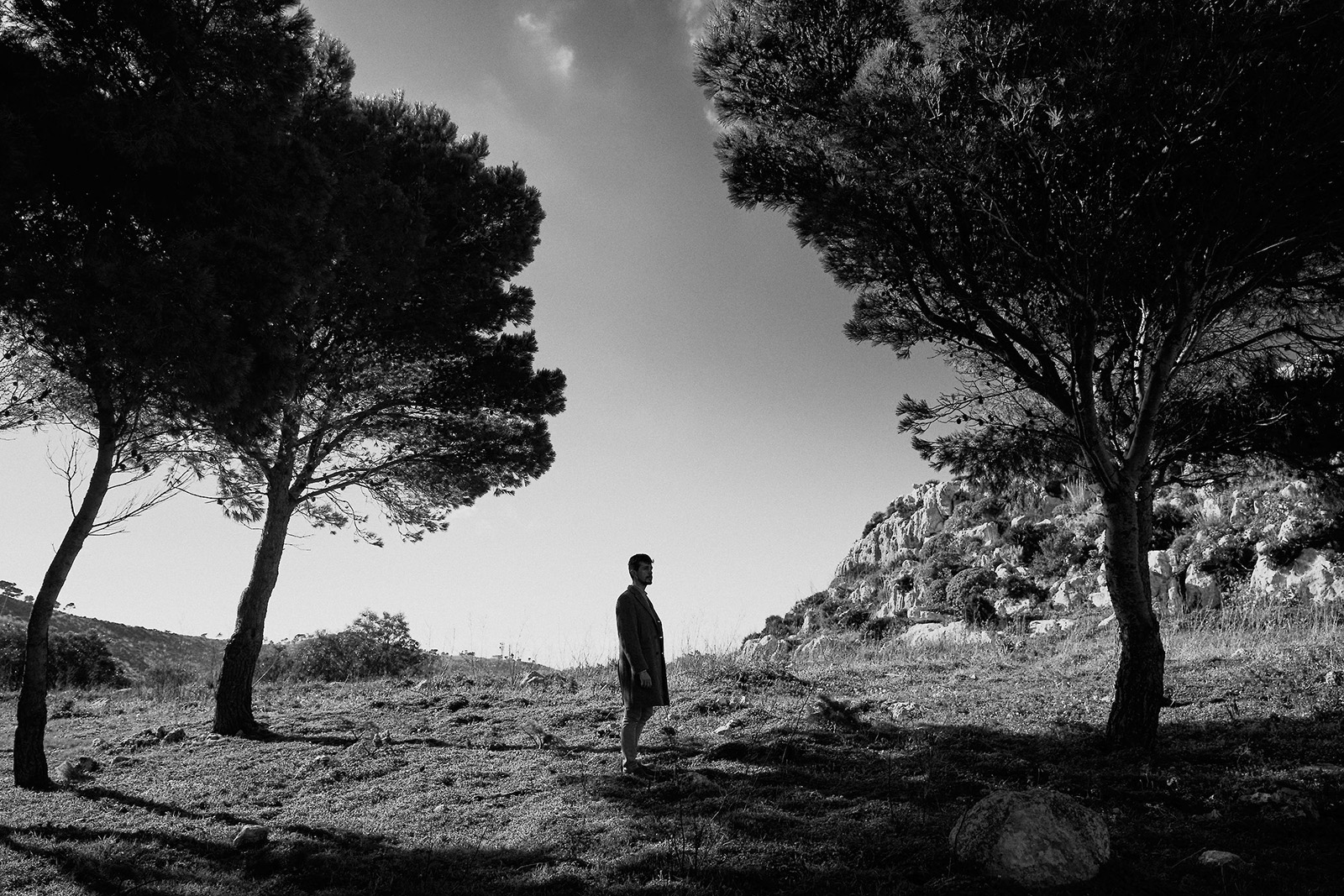
In the summer of 2018, he completed the construction of the restaurant-bar Off Club in Rome, commissioned by Massimo Di Persio. This project explores the concept of the ‘Shadow’, a central aspect of analytical psychology, representing the hidden and unacceptable parts of the human psyche. Suzanne Trocmé unveiled it, saying, “A long-time Wallpaper* collaborator, Antonino Cardillo’s latest work marks a defining moment for the Sicilian architect.” Tom Wilkinson wrote in The Architectural Review magazine:
These hieratic forms create an atmosphere of slightly menacing mystery—one could expect a Mithraic rite to begin at any moment.
Sight Unseen co-founder Monica Khemsurov defined Off Club as “his latest masterpiece.” Tim Berge from Berlin noted: “His works are a conglomerate of myths, fairy tales, and mental images from different epochs and cultures. He wants to create an architecture of the unconscious, inspired by one of his great masters, the Swiss psychologist Carl Gustav Jung.” Lucia Galli of Paolo Portoghesi magazine Abitare la Terra added: “This is a strong reference to the archetype, one which is considered as the need to return to the origin of things.”
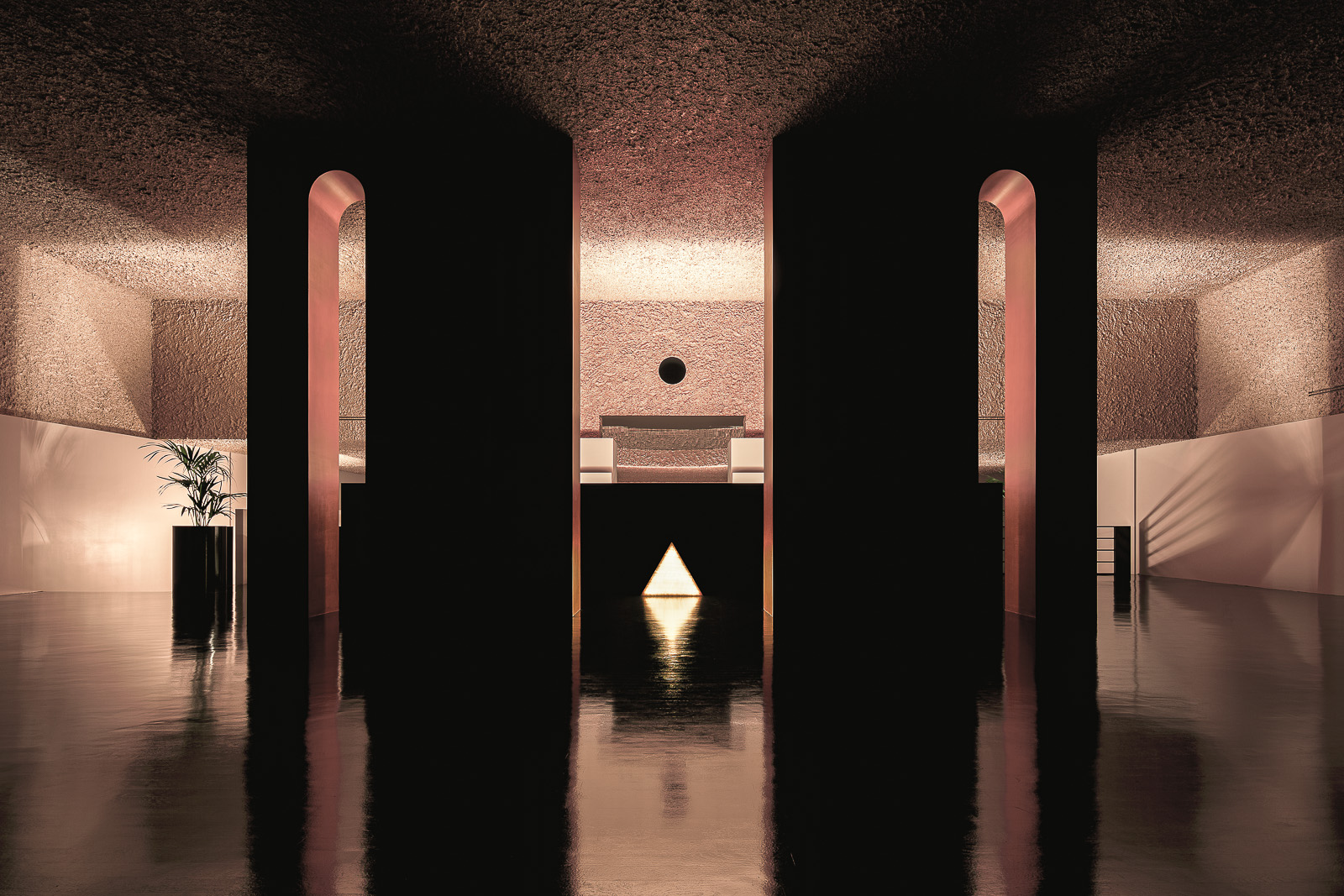
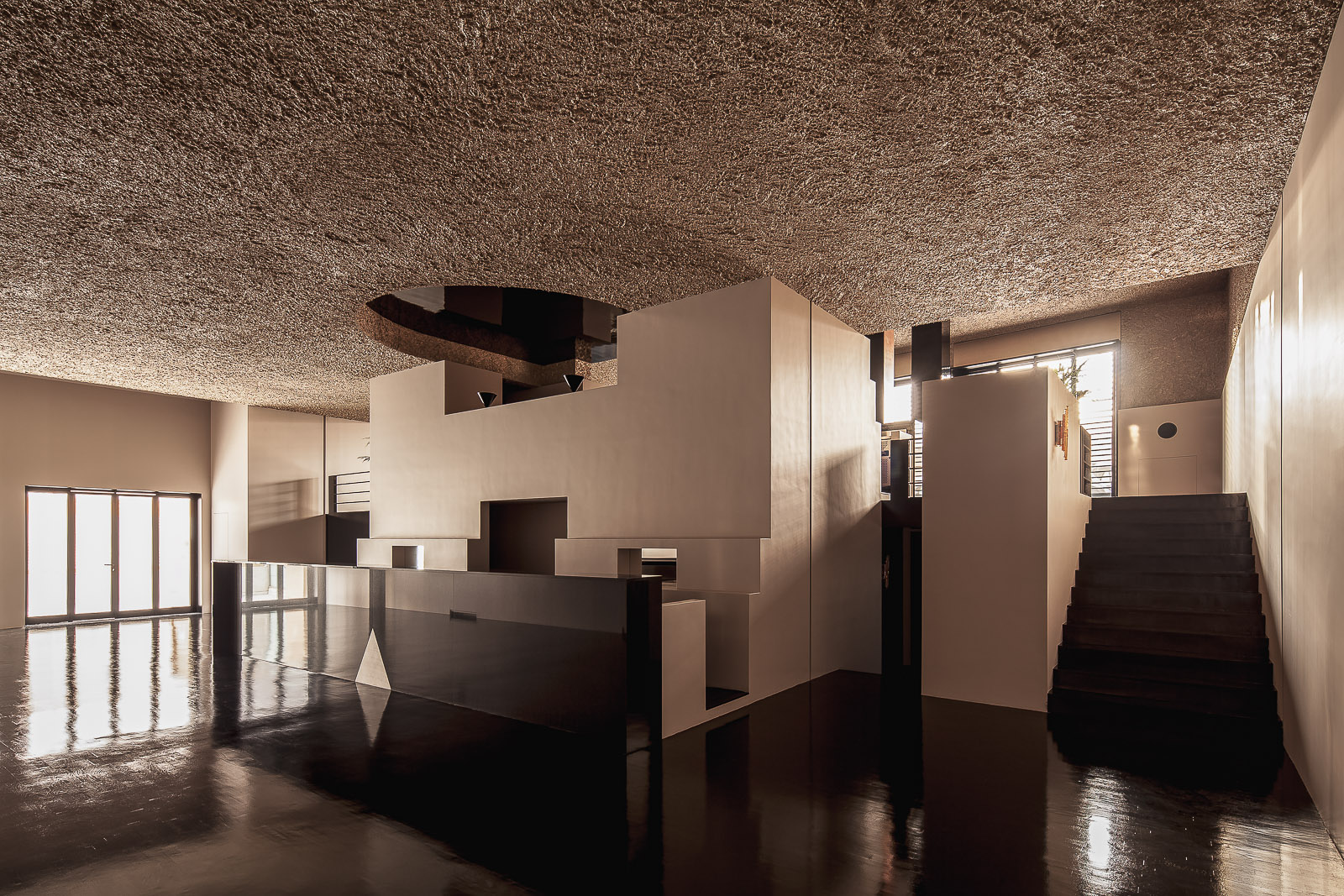
In the year 2019, he was invited to talk as part of the Inside/Out lecture series by the students of London’s Royal College of Art and the Bauhaus Campus Dessauer Gespräche by Johannes Kister.
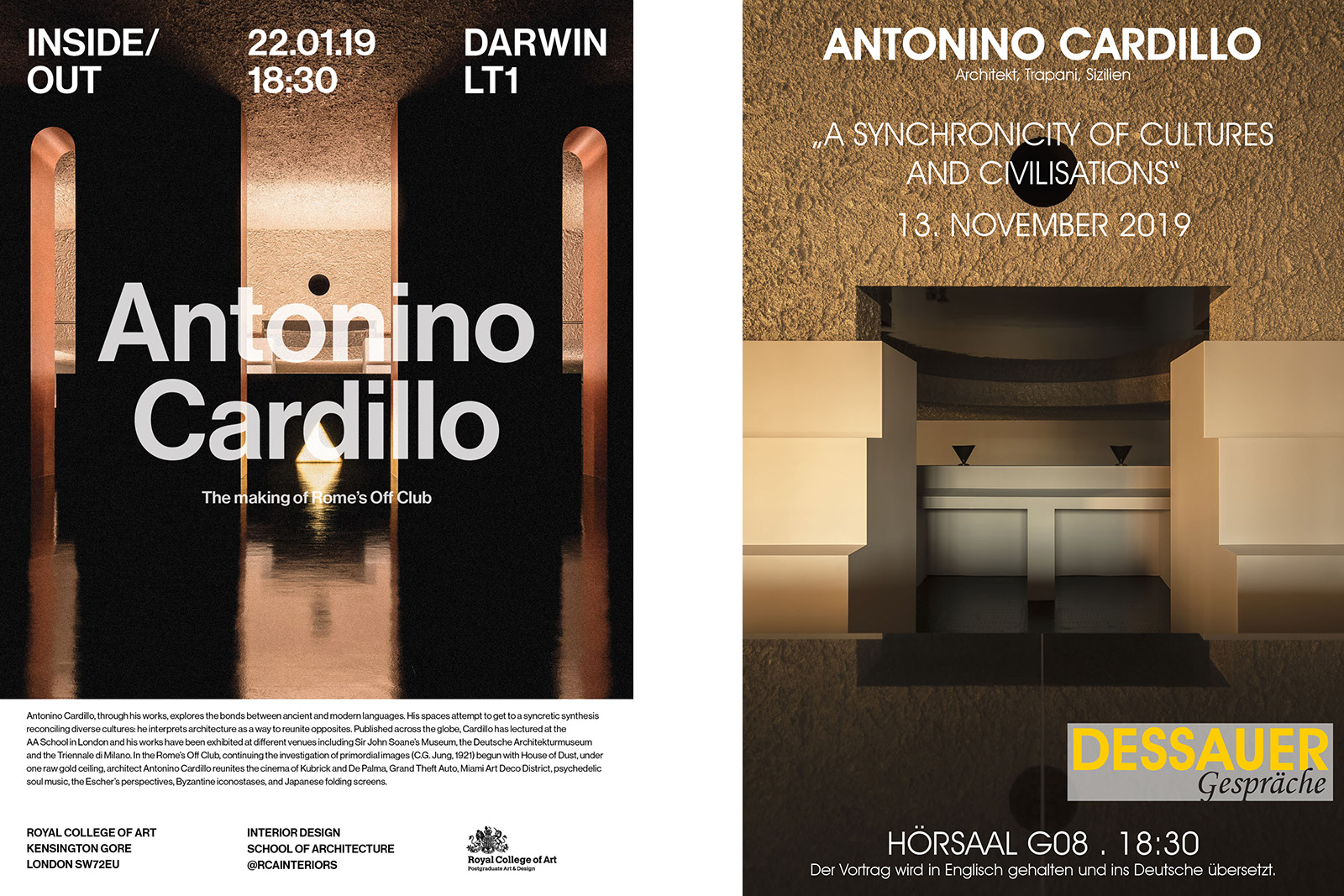
Threshold of twilight
In the spring of 2021, he completed the construction of the Mammacaura dock at the Salina Ettore e Infersa for the ancient Phoenician island of Mothia, near the western coast of Sicily. This landscape restoration project represented a reflection on sunset, evoking the themes of Friedrich Nietzsche’s ‘Twilight’ and Arnold Böcklin’s Isle of the Dead. The project was presented by Francesco Dal Co, Paolo Zermani, Paolo Portoghesi and Cesare Maria Casati.
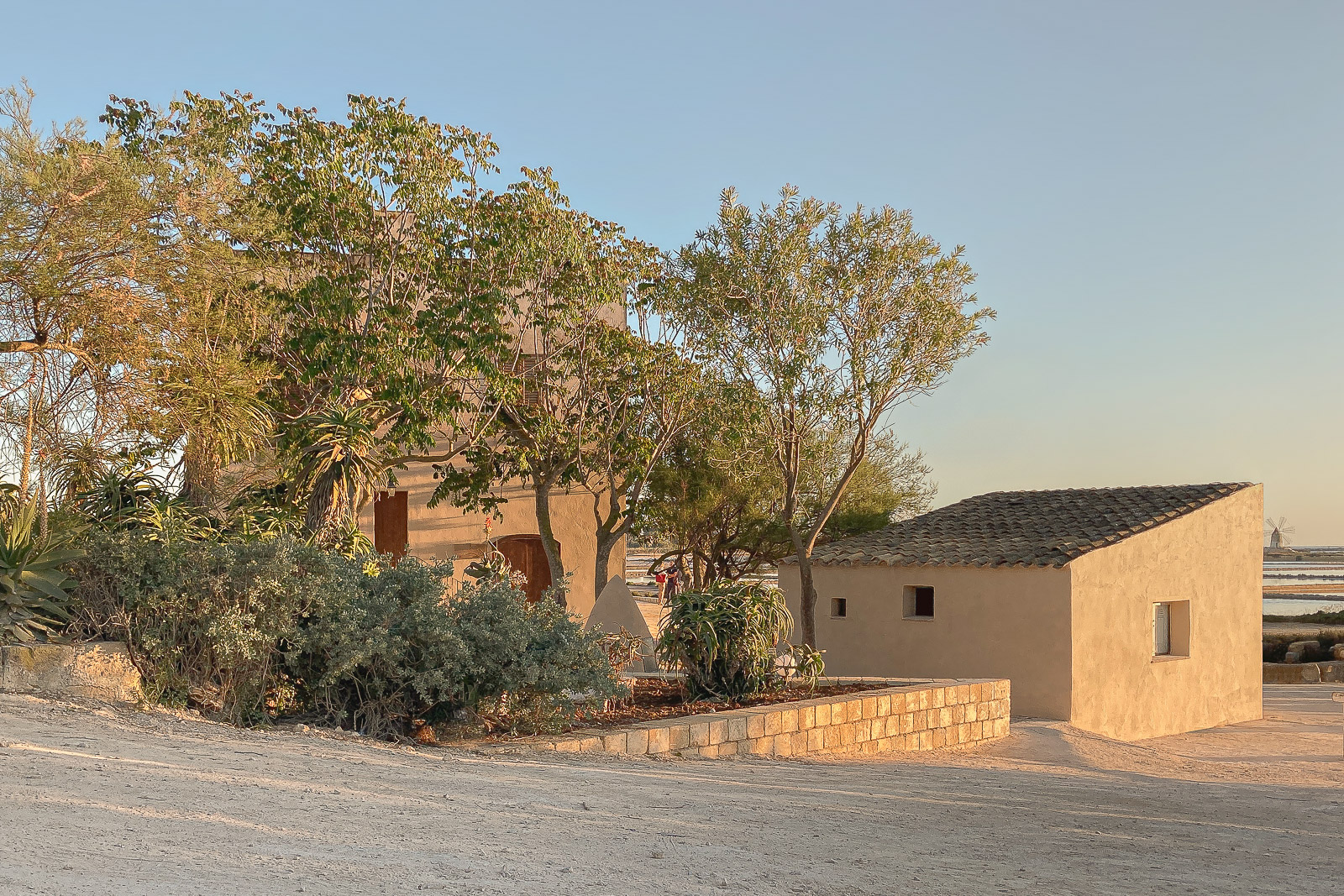
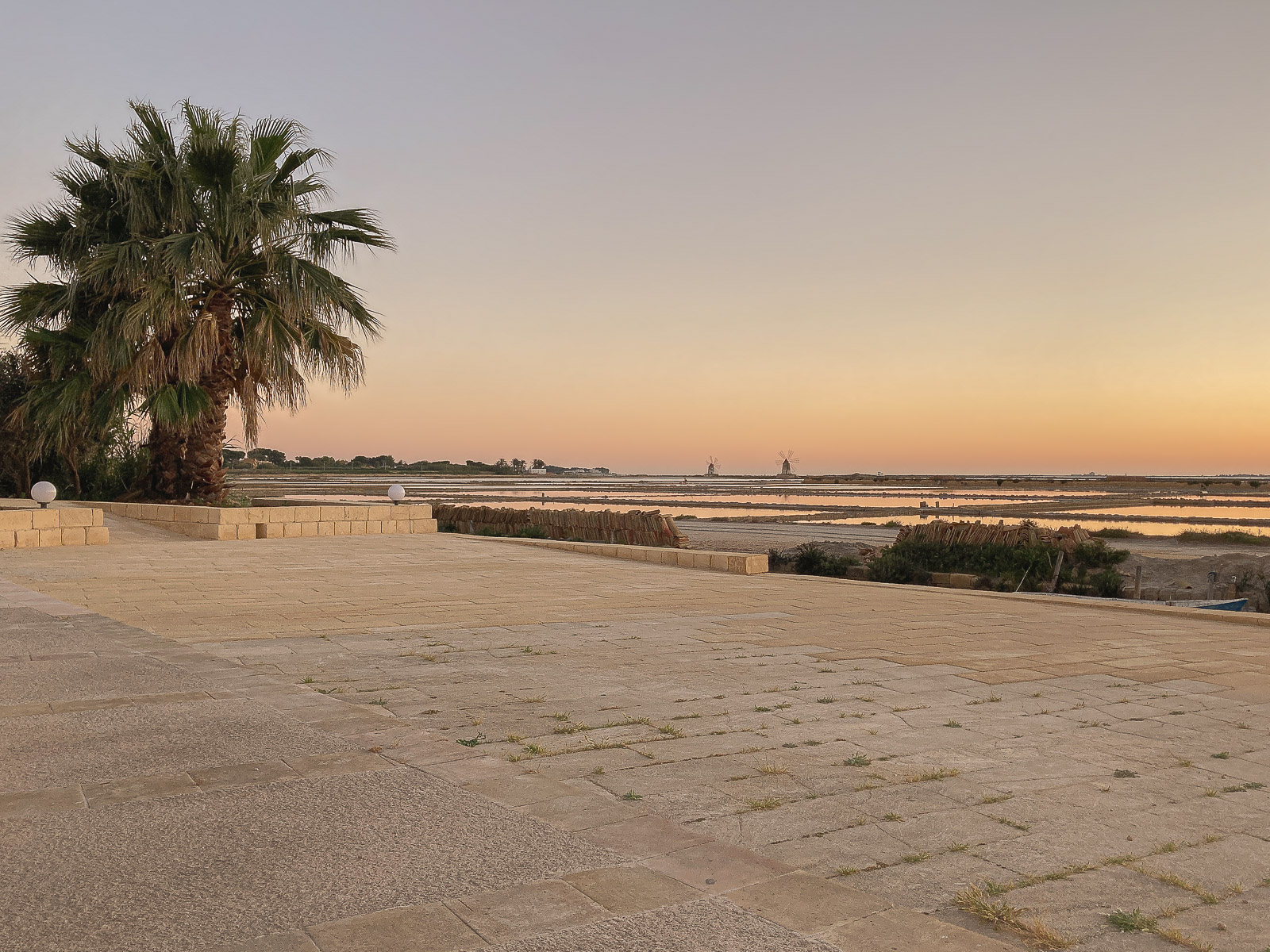
In the spring of 2023, eight days before his death, Paolo Portoghesi welcomed Cardillo to his home in Calcata, saying:
In all these years you have remained consistent with your vision of architecture. You did not give in, and your works possess an integrity that is very rare today. This makes you one of the few architects.
Six months later, editor-at-large Amy Frearson presented his work Elogio del Grigio house as “miniature palazzo” on Dezeen: “The project seeks to recognise and integrate some of the contributions of civilisations which are largely forgotten in Western architecture,—he told Dezeen.—It accepts Hegel’s invitation to learn to see the endless greys of realities,—he added, referencing the words of a 19th-century German philosopher.” Stephan Becker from Berlin observed: “Antonino Cardillo does not mention Wittgenstein in his latest project. […] However, the residential house he has built for a family of three, with its angular and austere appearance, still evokes thoughts of the house in Vienna.”
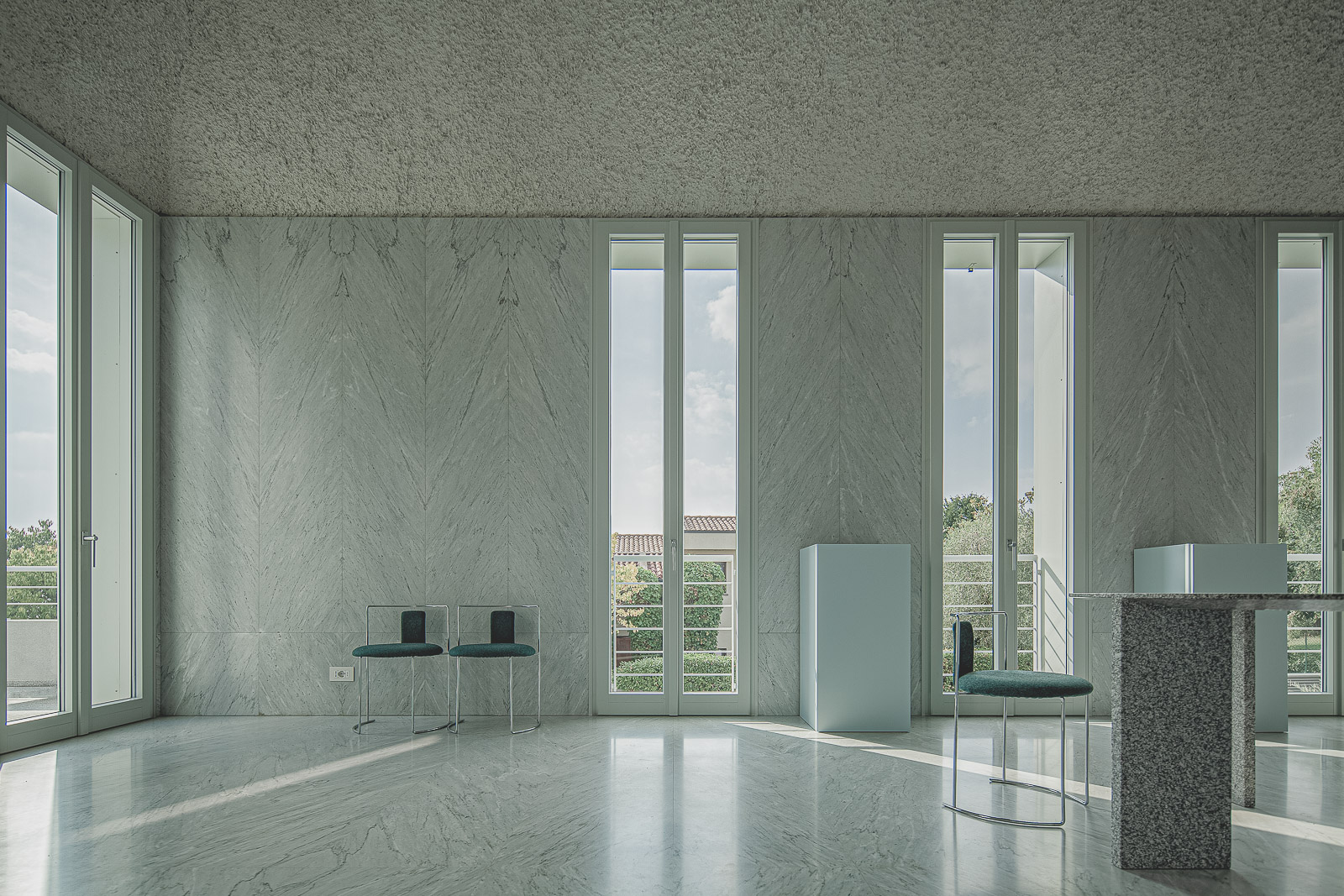
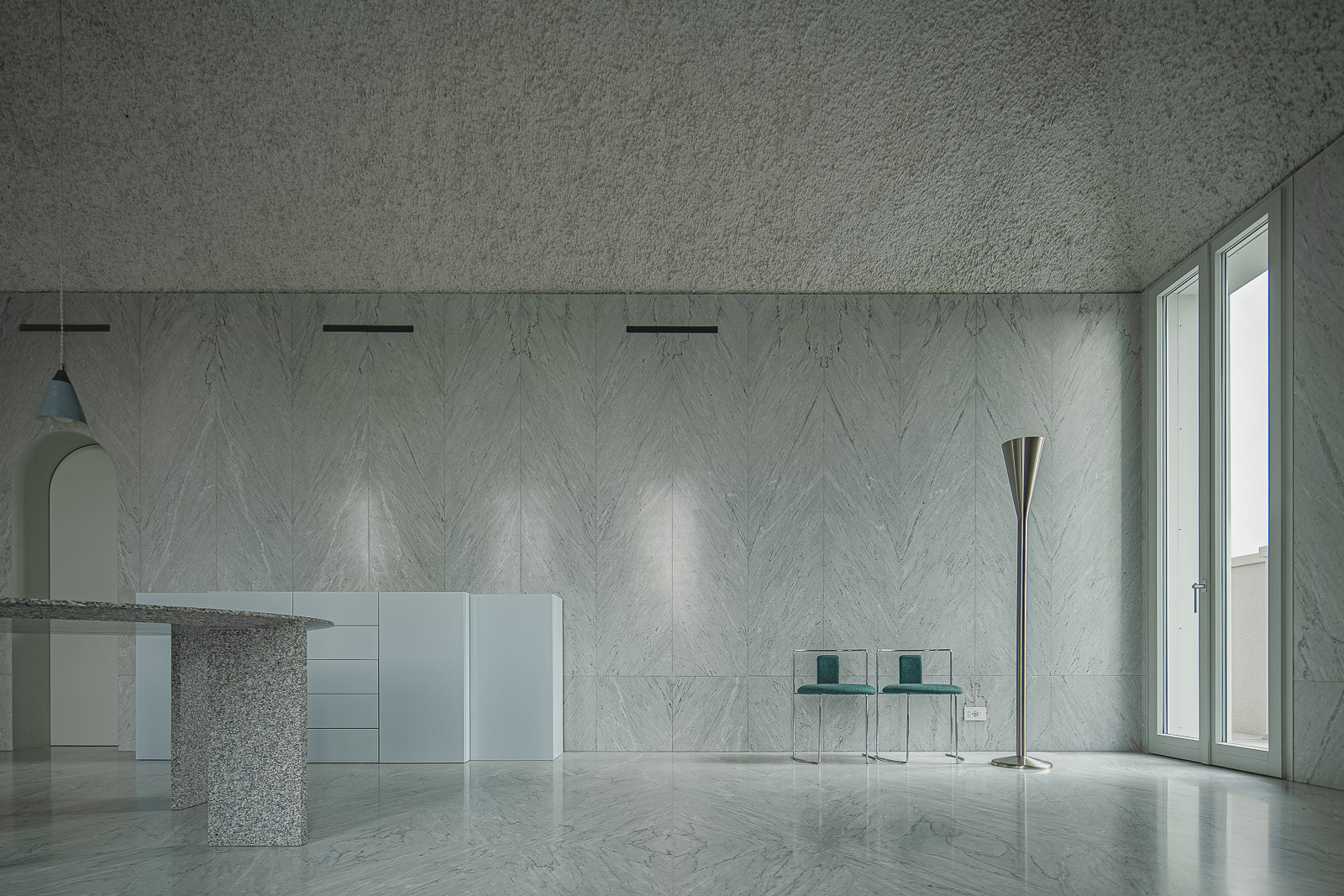
In the winter of 2024, Cardillo moved to Munich and spent a formative period with Andrea Sironi-Straußwald, an art historian, and the nephew and heir of painter Mario Sironi. In the summer of the same year, Thomas Di Santo and his students from California Polytechnic State University visited Elogio del Grigio. On that occasion, Cardillo presented the result of over twenty years of research, developed around his website, in the conference “Architecture of a historiography”.
Notes
- ^ Antonino Cardillo, ‘www.antoninocardillo.com’,[↗] web.archive.org, San Francisco, 22 Aug. 2003.
- ^ World Architecture News, ‘House of year 2006’ (pdf), worldarchitecturenews.com, London, 9 Feb. 2007.
- ^ Antonino Cardillo, ‘Comment’ (pdf), Blueprint, no. 256, London, July 2007, p. 58.
- ^ Matt Hussey, ‘Ellipse 1501 House’,[↗] thecoolhunter.net, Sydney, 5 July 2007.
- ^ Devyani Jayakar, ‘Celestial vision’ (pdf), Home Review, no. 6/5, Mumbai, Sept. 2007, p. 58.
- ^ Judith Jenner, ‘Ein Haus wie ein Tanz’ (pdf), H.O.M.E., no. 2/10, Berlin, Feb. 2010, p. 130.
- ^ Helen Geng Haizhen, ‘印象派建筑师’ (pdf), Interior Architecture of China, no. 107, Beijing, Nov. 2011, pp. 30.
- ^ Jonathan Bell, Ellie Stathaki, ‘Architects directory 2009’ (pdf), Wallpaper*, no. 125, London, Aug. 2009, p. 81.
- ^ Tony Chambers, Men’s footwear world tour (pdf) [media release], Sergio Rossi‑Wallpaper*, Milan, March 2010, p. 1.
- ^ Mitchell Oakley Smith, Alison Kubler, ‘From boutique to gallery: fashion, art and architecture’ (pdf), in Art / Fashion in 21st Century, Thames & Hudson, London, Oct. 2013, p. 254.
- ^ Massimo Locci, ‘Sperimentazioni di Antonino Cardillo’ (pdf), L’Architetto Italiano, no. 42, Rome, April 2011, p. 32.
- ^ London Design Festival, ‘Postmodern Cafe’ (pdf), in The London Design Festival 2011 Guide, London, Sept. 2011, pp. 8‑9, 43, 183, 239.
- ^ Susanne Beyer, ‘Titel / Vatikanbank / Architektur’,[↗] Der Spiegel, no. 27/12, Hamburg, 2 July 2012, pp. 3, 121‑123.
- ^ Nicola Bozzi, ‘L’uomo che amava i rendering’,[↗] Studio, Milan, 20 July 2012.
- ^ Carl Zillich, with Fabrizio Gallanti, Lars Krückeberg, Volkwin Marg, Wolfram Putz, Peter Reischer, Andreas Ruby, Tobias Walliser, Thomas Willemeit, ‘Causa Cardillo: Geht’s noch ohne Hochstapelei?’,[↗] bkult.de, Berlin, 10 Sept. 2012.
- ^ Stefano Mirti, Gioia Guerzoni, ‘Siamo specchi l’uno dell’altro’ (pdf), Opere, no. 32, Florence, Oct. 2012, p. 56.
- ^ Kirsten Wenzel, ‘Der Architekt als Maerchenerzaehler’,[↗] competitionline.com, Berlin, 17 Jan. 2019.
- ^ Paolo Maria Noseda, ‘Una casa, una visione’,[↗] Casamica, no. 3/13, Corriere della Sera, Milan, June 2013, p. 77.
- ^ Amy Frearson, ‘House of Dust by Antonino Cardillo’,[↗] dezeen.com, London, 5 Aug. 2013.
- ^ Nacho Alegre, ‘House of Dust’ (pdf), in ROOM: Inside Contemporary Interiors, Phaidon, London, Oct. 2014, pp. 64‑67.
- ^ Francesca Gottardo, ‘Architettura di polvere’ (pdf), Abitare la Terra, no. 37, dir. Paolo Portoghesi, Rome, March 2015, pp. 50‑53.
- ^ Anonymous, ‘Data divination’ (pdf), in Homebuildlife Macro Trends Autumn/Winter 2015/16, WGSN, London, Nov. 2013.
- ^ Hannah Robinson, Aleksandra Szymanska, ‘Ephemeral spaces’,[↗] Anti-Materials, LS:N Global, London, 14 Aug. 2014.
- ^ Louis Gérin, Grégory Lamaud, ‘Mash up’ (pdf), in Texworld Trend Spring Summer 2015, Messe Frankfurt, Paris, 2014, pp. 31, 61.
- ^ Anonymous, Cover All 2018–2019, vol. 2, Noroo Pantone Color Institute, Seoul, Nov. 2017.
- ^ Beppe Finessi, ‘Storie di altre stanze’ (pdf), in ‘Stanze. Altre Filosofie dell’Abitare’, exhib. cat., ed. Beppe Finessi, Marsilio, Milan, Sept. 2016, p. 283.
- ^ Jenny Dalton, ‘Decorative ceilings’,[↗] How to Spend It, Financial Times, London, March 2014, p. 71.
- ^ Ana Araujo, ‘Feeling through sight: zooming in, zooming out’,[↗] The Journal of Architecture, vol. 19, no. 1, RIBA, London, Jan. 2014, p. 15.
- ^ Antonino Cardillo, ‘Antonino Cardillo: House of Dust’,[↗] paper presented to the ‘Intermediate Unit 2’, ed. Alexandra Savtchenko‑Belskaia, AA School, London, 20 Nov. 2013.
- ^ Antonino Cardillo, ‘The alternative’,[↗] Fulcrum, tr. Charles Searson, no. 77, AA School Press, London, 18 Nov. 2013, p. 1.
- ^ Alice Morby, ‘Antonino Cardillo bases textured all-green gallery interior on Wagner opera’,[↗] dezeen.com, London, 17 April 2017.
- ^ Pierre Yovanovitch, ‘Nova geração. Narrativas inusitadas’ (pdf), Bamboo, no. 61, São Paulo, Aug. 2016, p. 33.
- ^ Jeanette Kunsmann, ‘Götterdämmerung in Rom’,[↗] designlines.de, BauNetz, Berlin, 24 Feb. 2015.
- ^ Maxwell Blowfield, Space and Light (pdf), Sir John Soane’s Museum, London, 7 Aug. 2014.
- ^ Anna Winston, ‘Antonino Cardillo combines scent and texture for Illuminum Fragrance shop interior’,[↗] dezeen.com, London, 6 May 2015.
- ^ Victoria Buchanan, Jessica Smith, Aleksandra Szymanska, ‘New Luxury Trends’[↗], Luxury Futures 2015 Report, LS:N Global, Londra, 16 Sept. 2015, pp. 46‑47.
- ^ Jessica Cooper, ‘Illuminum: a shop with no products in sight’ (pdf), Eclectic, no. AW15, Paris, Sept. 2015, p. 160.
- ^ Jean-Marie Martin, ‘Evocazione, astrazione, illusione – Sala Laurentina, Cattedrale di Trapani, Sicilia’,[↗] Casabella, no. 879, Milan, Nov. 2017, p. 30.
- ^ Andreas Kühnlein, ‘Architektur: Traumwelt’ (pdf), AD Germany, no. 178, Munich, April 2017, p. 163.
- ^ Kerstin Schultz, Hedwig Wiedemann-Tokarz, Eva Maria Herrmann, ‘Inherent color and material color’[↗] [contents], in Thinking Color in Space, Birkhäuser, Berlin-Boston, Dec. 2018, pp. 314‑315.
- ^ Annie Carroll, ‘Our top three favourite works by architect Antonino Cardillo’,[↗] atelierlumira.com, Sydney, 22 Jan. 2018; anniecarrollwrites.com, Melbourne, 23 Nov. 2018.
- ^ Mrinalini Ghadiok, ‘Elemental’ (pdf), Mondo* Arc India, no. 15, New Delhi, July 2017, p. 51.
- ^ Jeanette Kunsmann, Stephan Burkoff, ‘Architektur und Wahrheit’,[↗] DEAR Magazin, no. 1, Berlin, April 2017, p. 68.
- ^ Ana Araujo, in Jeanette Kunsmann, Stephan Burkoff, ‘Architektur und Wahrheit’,[↗] DEAR Magazin, no. 1, Berlin, April 2017, p. 84.
- ^ Suzanne Trocmé, ‘Roman empire: Off Club’,[↗] wallpaper.com, London, 17 Sept. 2018.
- ^ Tom Wilkinson, ‘Typology: Nightclub’,[↗] The Architectural Review, no. 1470, London, April 2020, p. 44.
- ^ Monica Khemsurov, ‘Saturday selects: week of September 17, 2018’,[↗] sightunseen.com, New York, 22 Sept. 2018.
- ^ Tim Berge, ‘Die Symmetrie der Nacht: Restaurant in Rom’,[↗] DEAR Magazin, no. 4/18, Berlin, Dec. 2018, p. 35.
- ^ Lucia Galli, ‘Off Club’ (pdf), Abitare la Terra, no. 49, Rome, June 2019, p. 38.
- ^ Antonino Cardillo, ‘Antonino Cardillo: the making of Rome’s Off Club’,[↗] paper presented to the Inside/Out lecture series, ed. Yara Boulos and Riccardo Rizzetto, Royal College of Art, London, 22 Jan. 2019.
- ^ Johannes Kister, ‘Vortragsreihe: Dessauer Gespräche’ (pdf), in Next to Bauhaus, vol. 2, ed. Matthias Hoehne, Hochschule Anhalt, Dessau Institute of Architecture, March 2020, pp. 216‑217.
- ^ Antonino Cardillo, ‘Mammacaura: where you sit’,[↗] Casabella, no. 925, dir. Francesco Dal Co, Milan, Sept. 2021, pp. 10‑17.
- ^ Antonino Cardillo, ‘Mammacaura’ (pdf), Identità dell’Architettura Italiana, vol. 19, ed. Paolo Zermani, Università degli Studi di Firenze, Diabasis, Parma, March 2022, pp. 58‑59.
- ^ Mario Pisani, ‘L’intervento nelle saline Ettore e Infersa a Mammacaura, Marsala 2021’,[↗] Abitare la Terra, no. 60, dir. Paolo Portoghesi, Rome, lug. 2023, pp. 30‑33.
- ^ Antonino Cardillo, ‘Mammacaura, Saline Ettore e Infersa, Laguna dello Stagnone’,[↗] L’Arca International, no. 174, dir. Cesare Maria Casati, Monaco, Sept. 2023, pp. 88‑93.
- ^ Antonino Cardillo, ‘Conversation with Paolo Portoghesi’,[↗] L’Arca International, no. 178, dir. Cesare Maria Casati, Monaco, 5 May 2024, pp. 90‑97.
- ^ Amy Frearson, ‘Antonino Cardillo designs Elogio del Grigio house as “miniature palazzo”’,[↗] dezeen.com, London, 18 Dec. 2023.
- ^ Stephan Becker, ‘Elegie in Grau’,[↗] baunetz.de, Berlin, 26 Feb. 2024.
- ^ Antonino Cardillo, ‘Architecture of a historiography: antoninocardillo.com’, paper presented to the History Theory Workshop, cur. Thomas Di Santo, California Polytechnic State University, Castiglione delle Stiviere, 9 Aug. 2024.